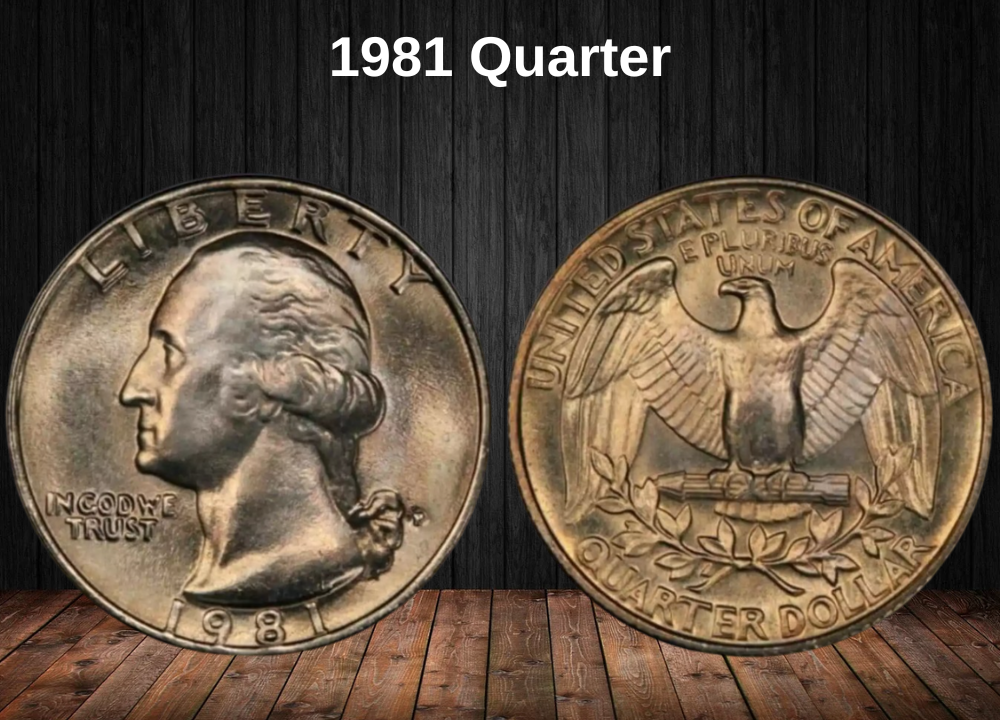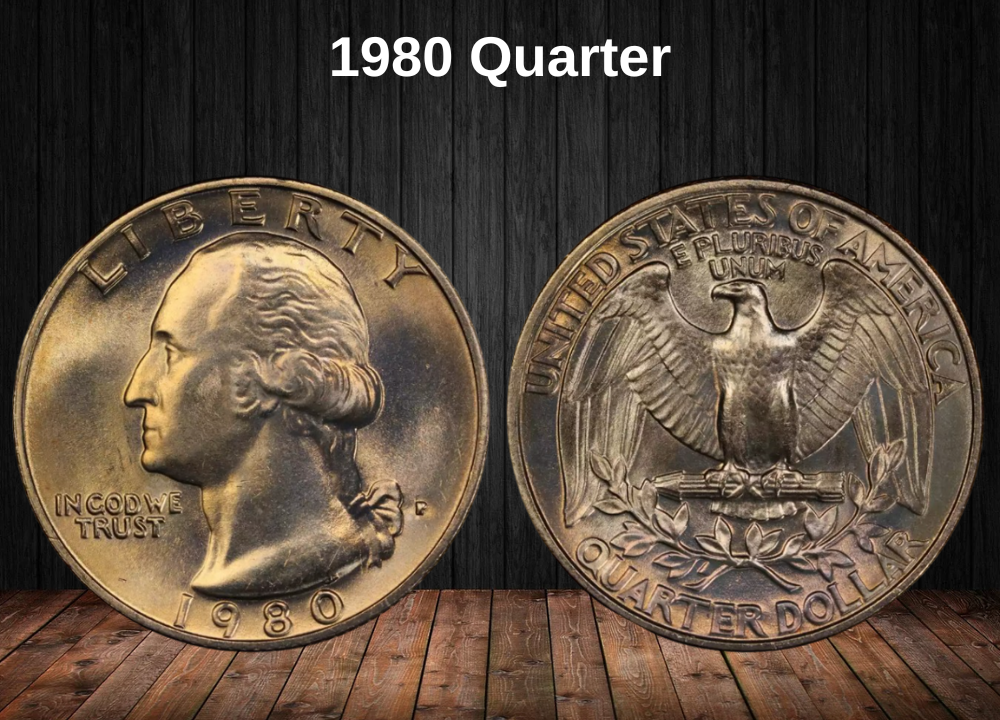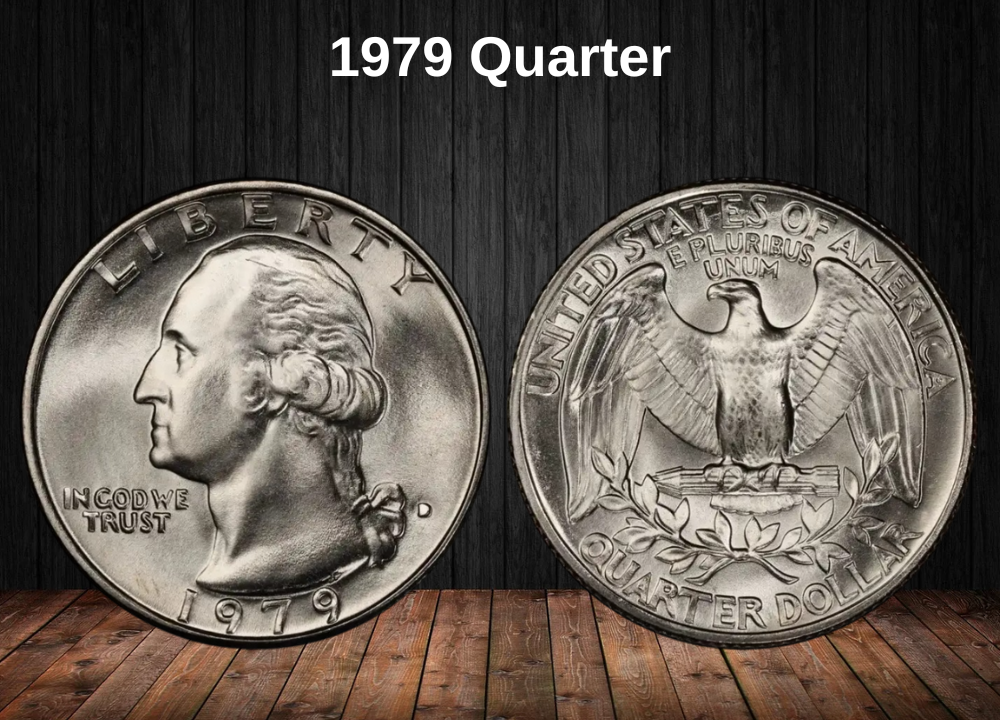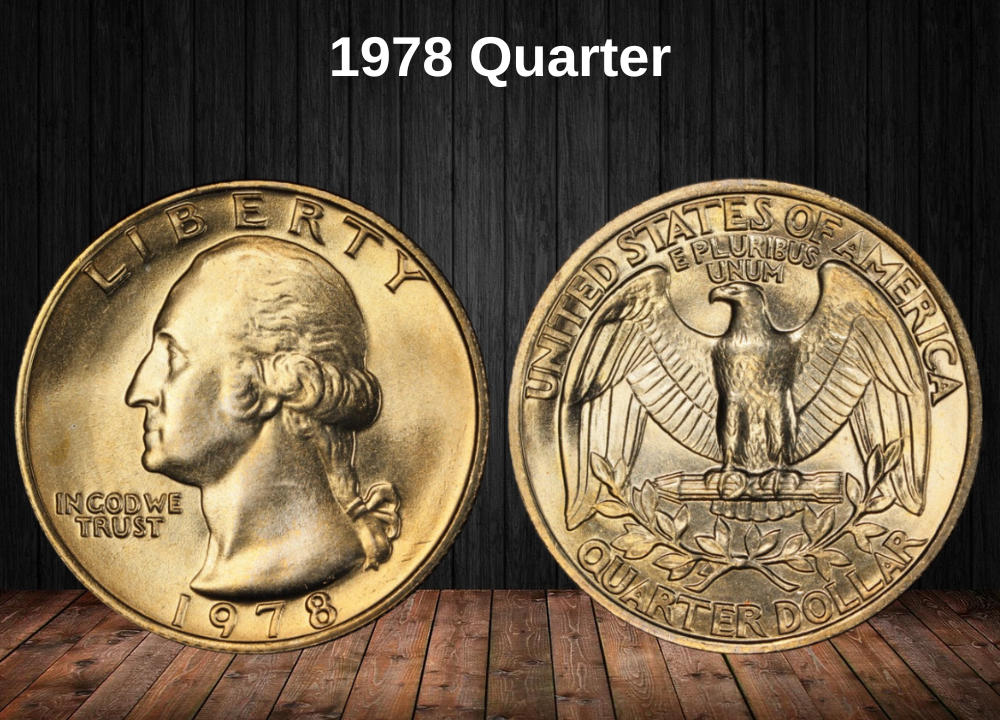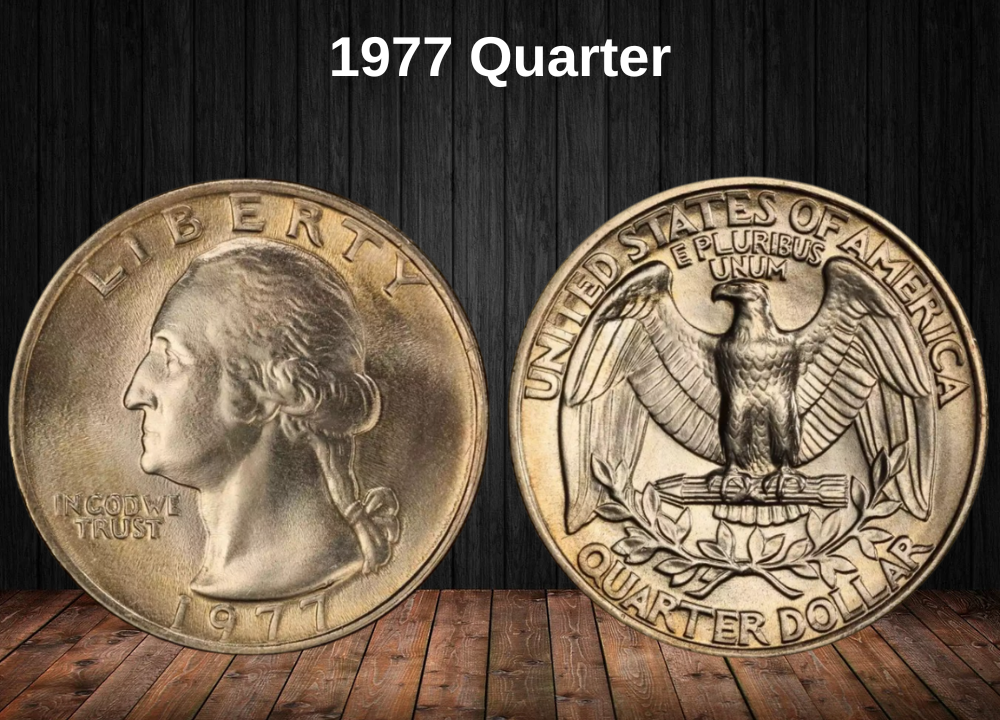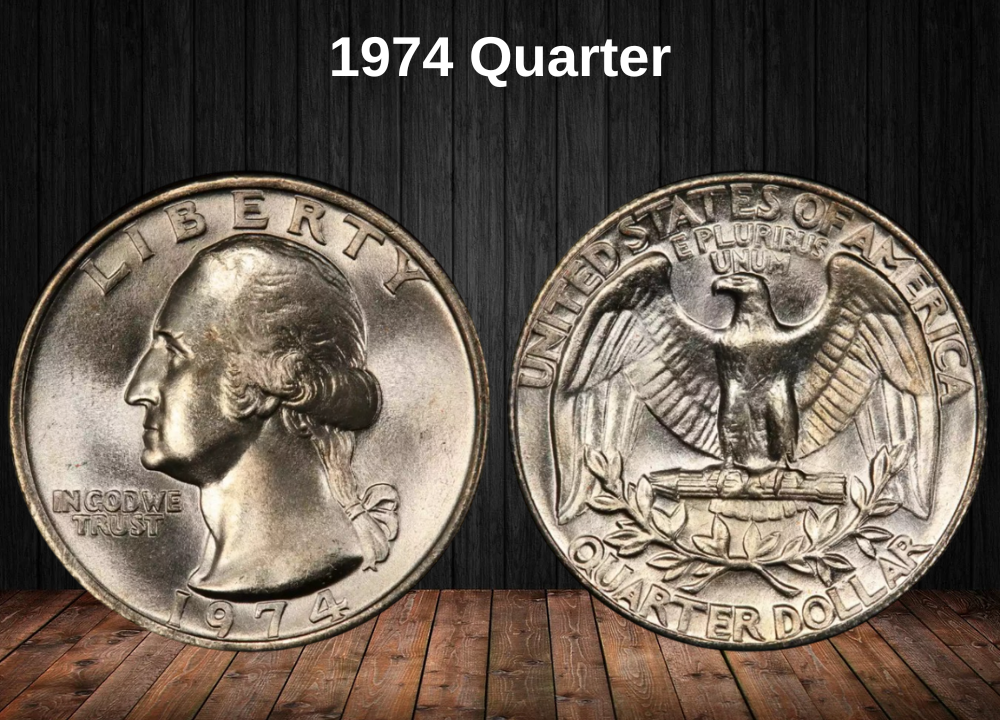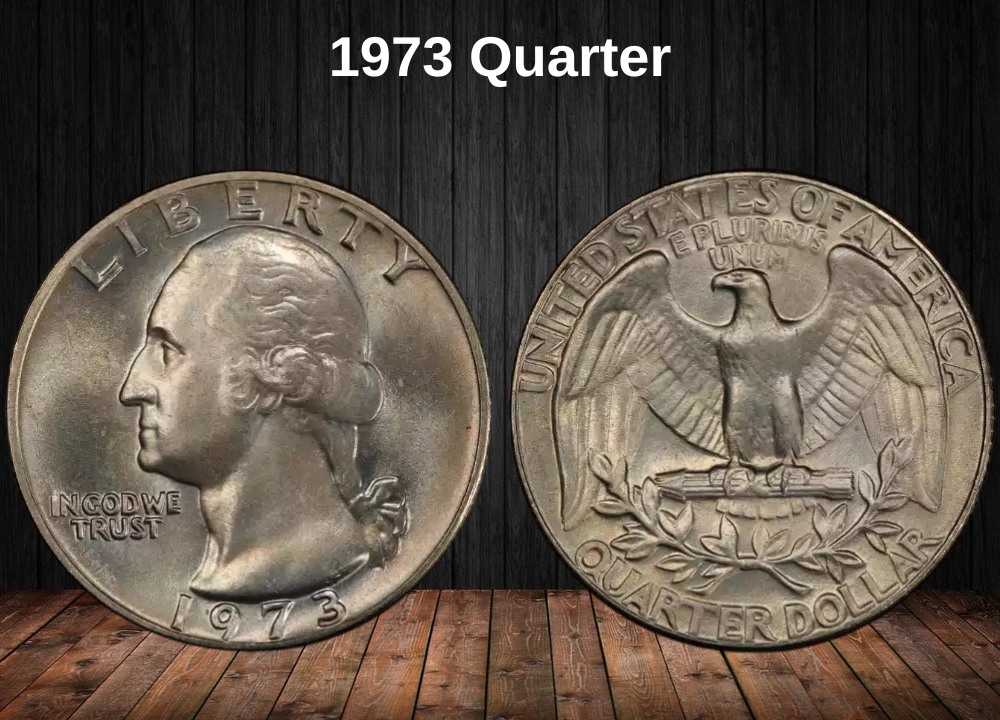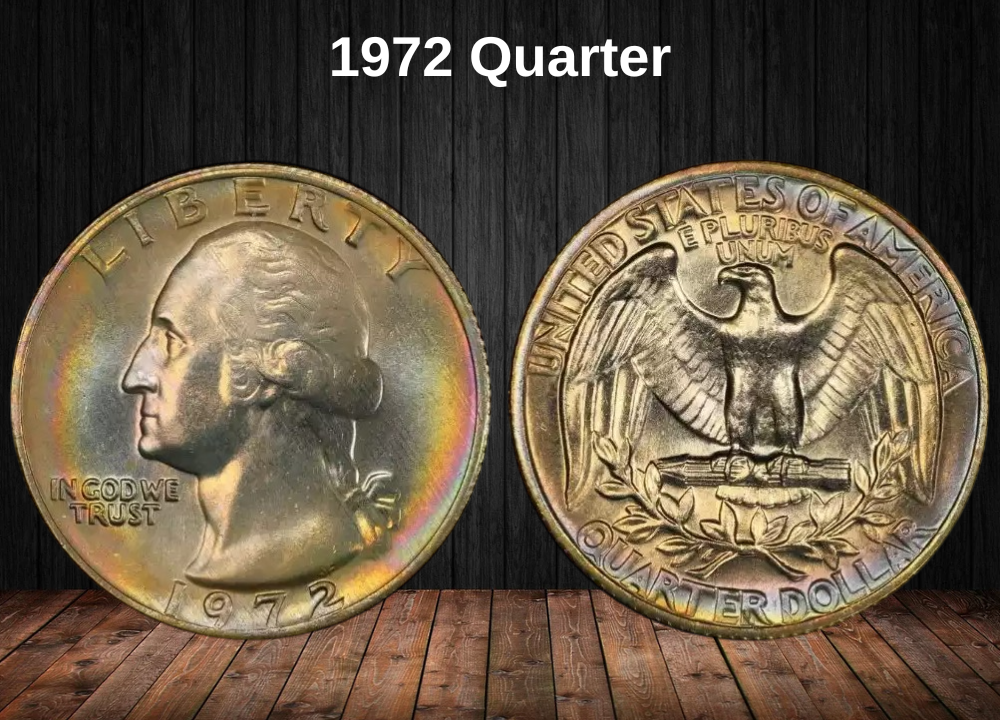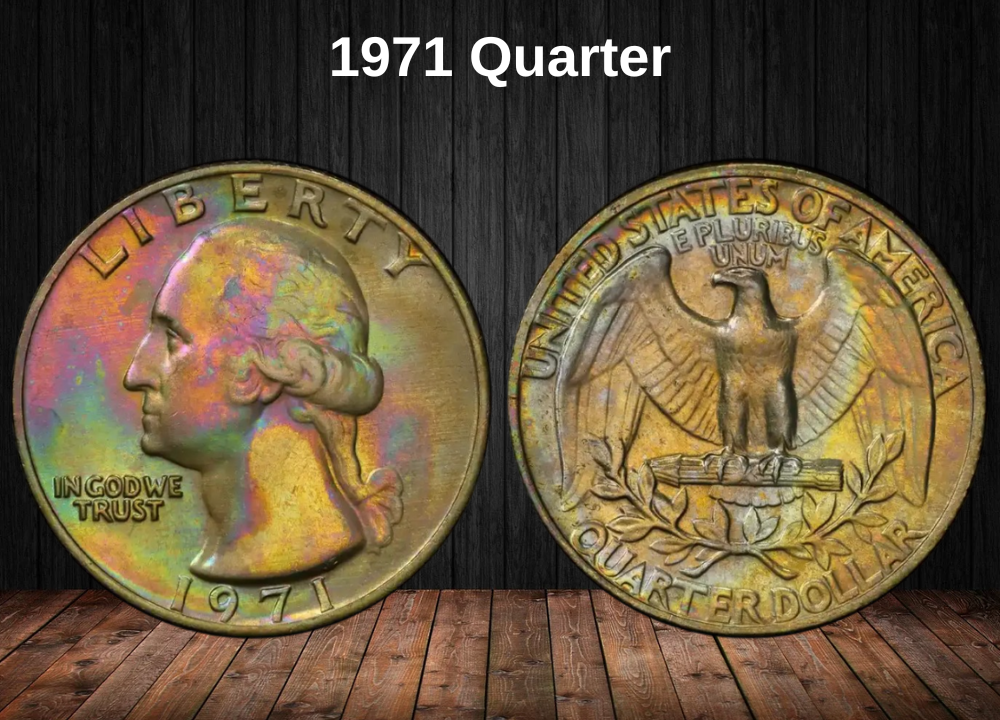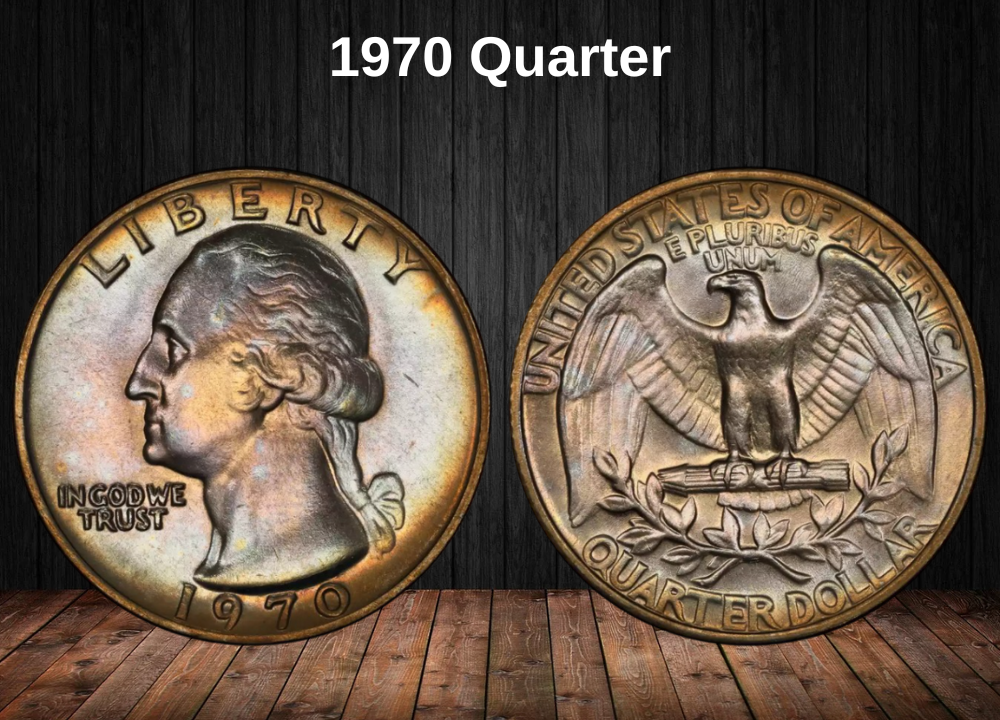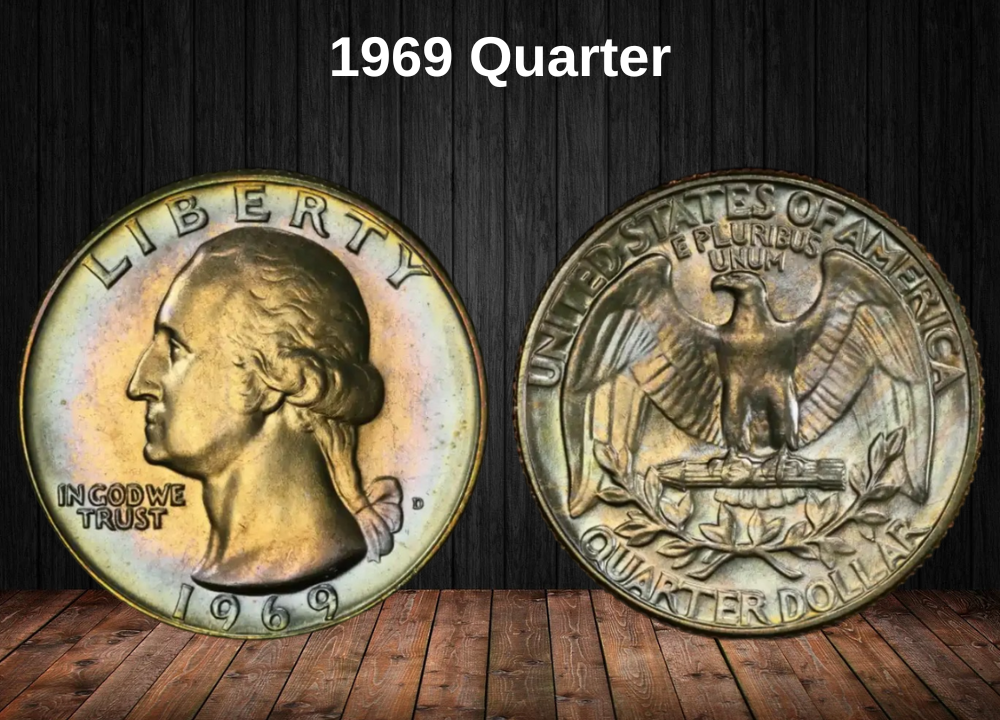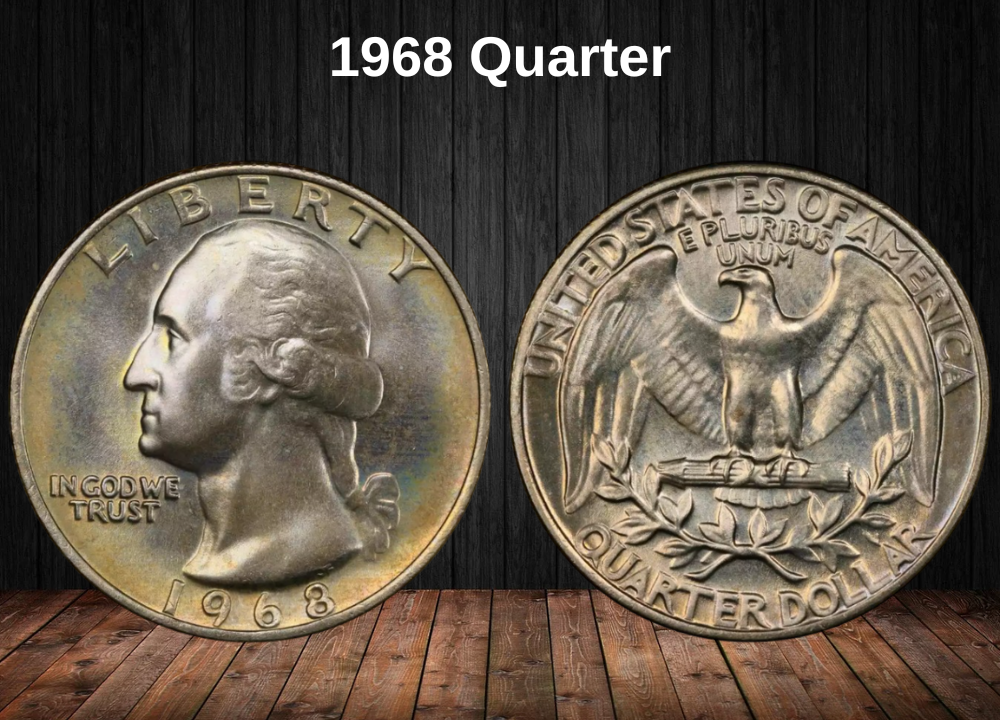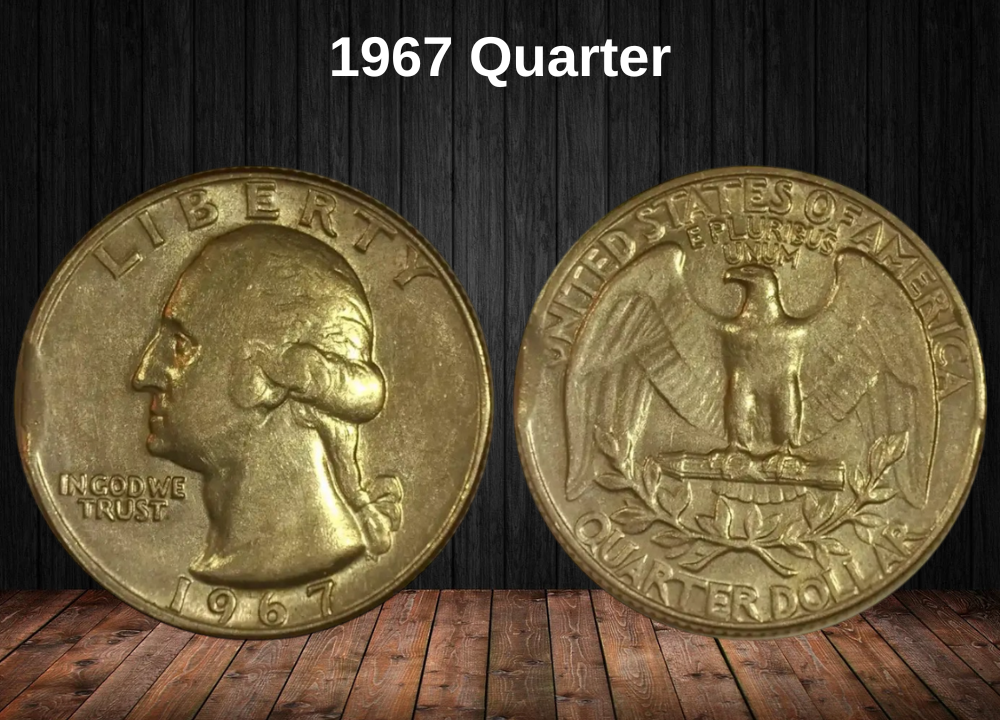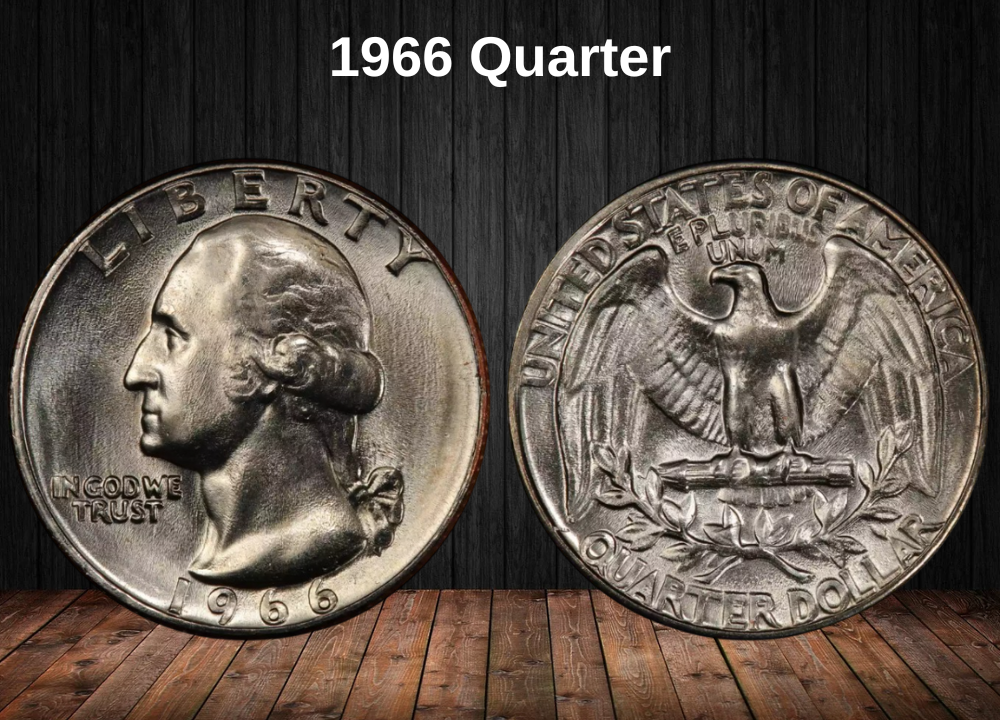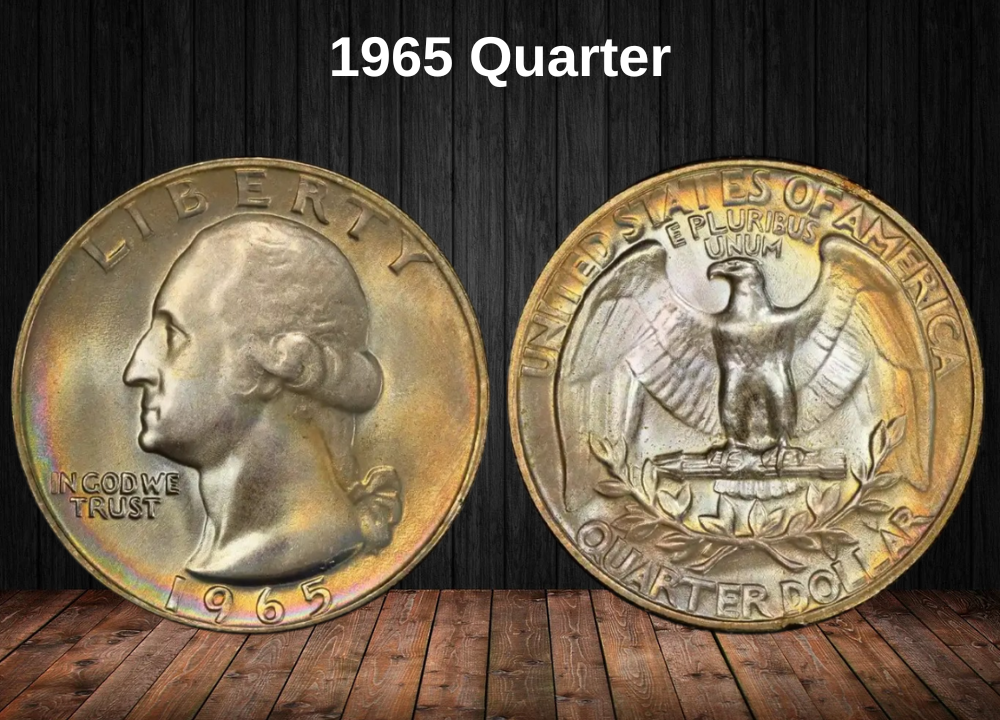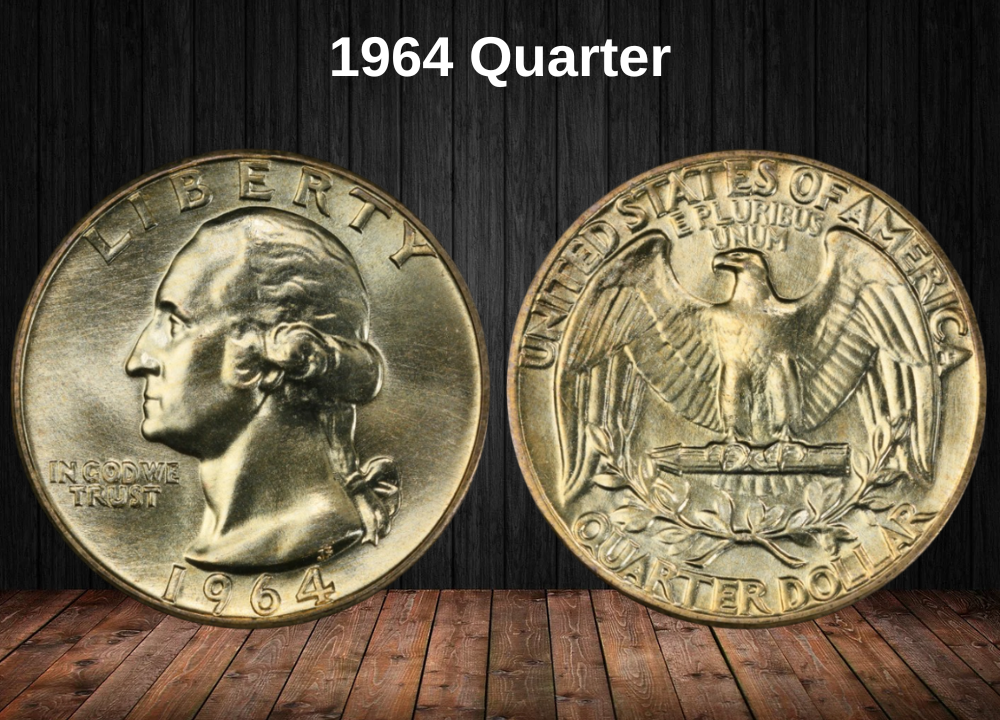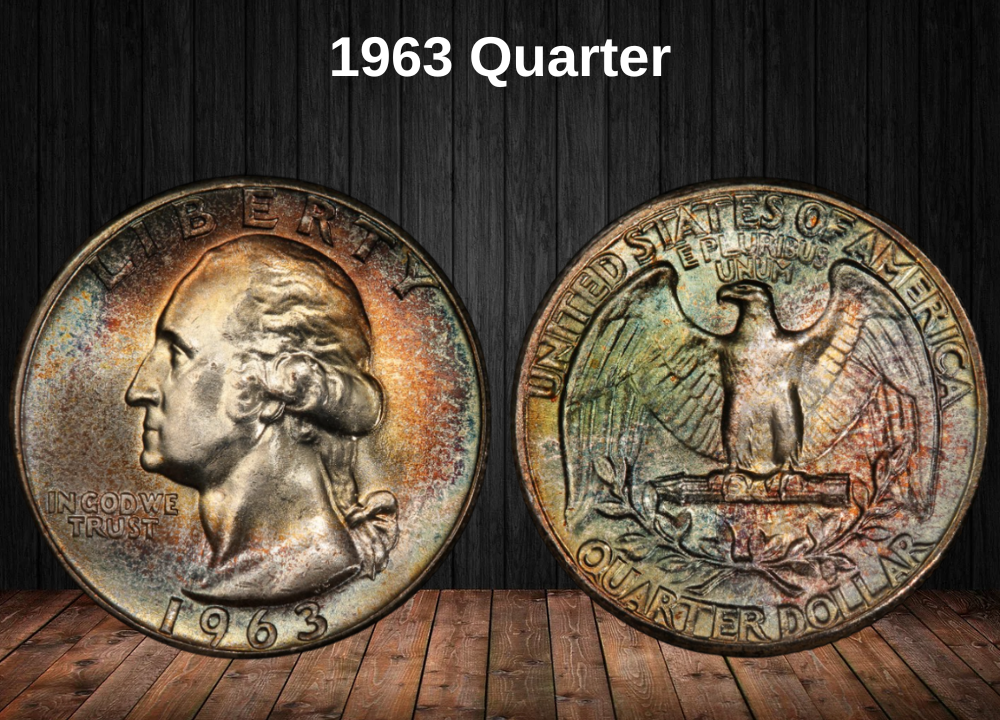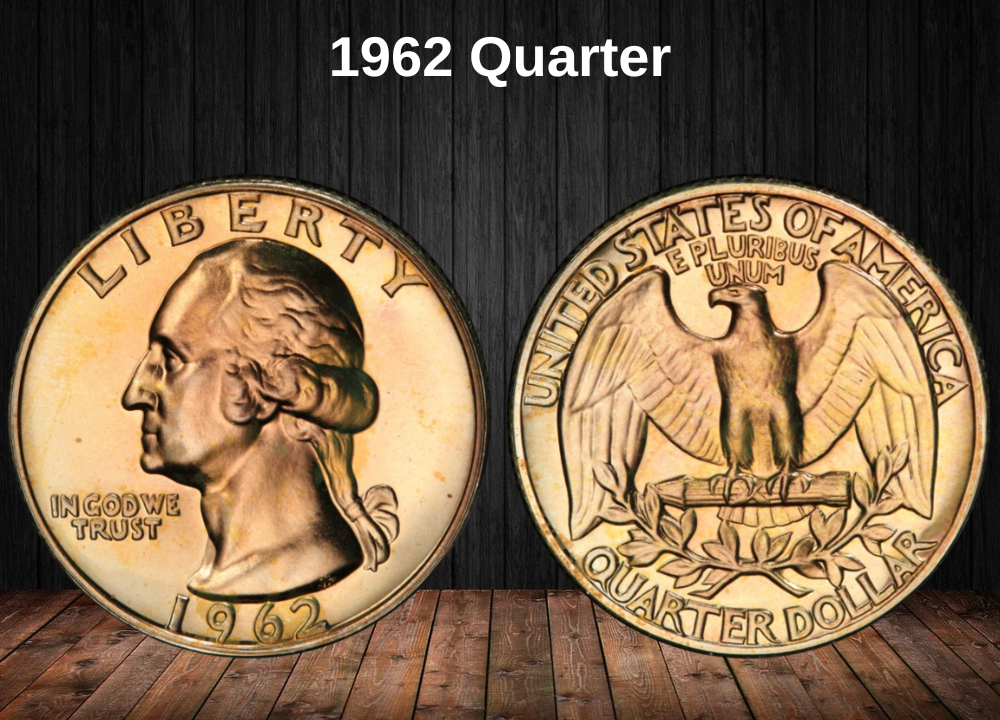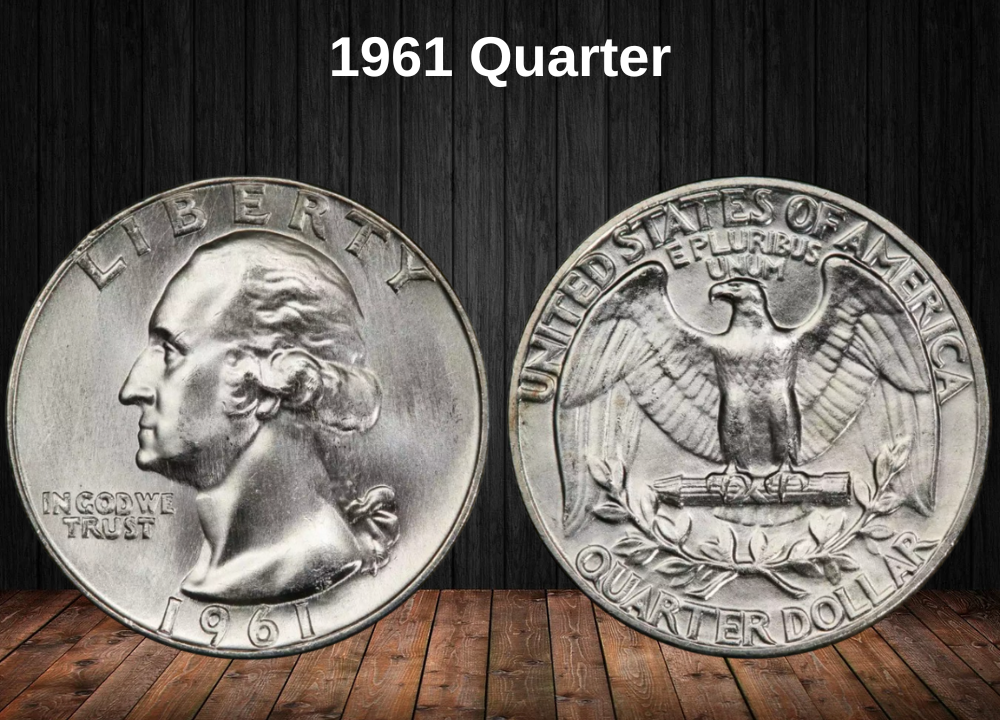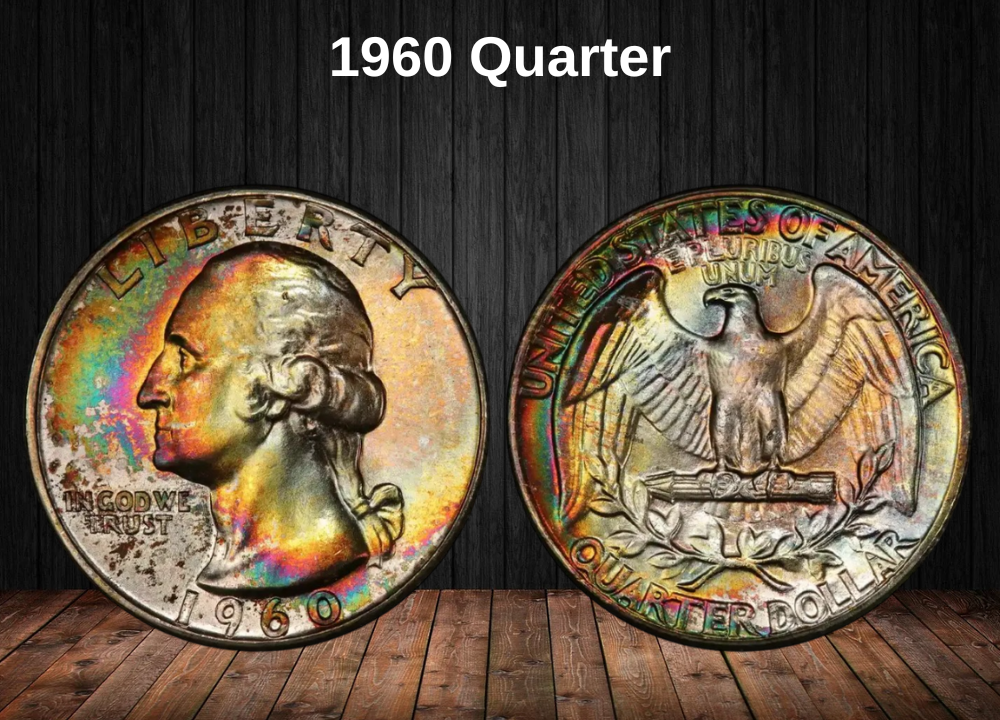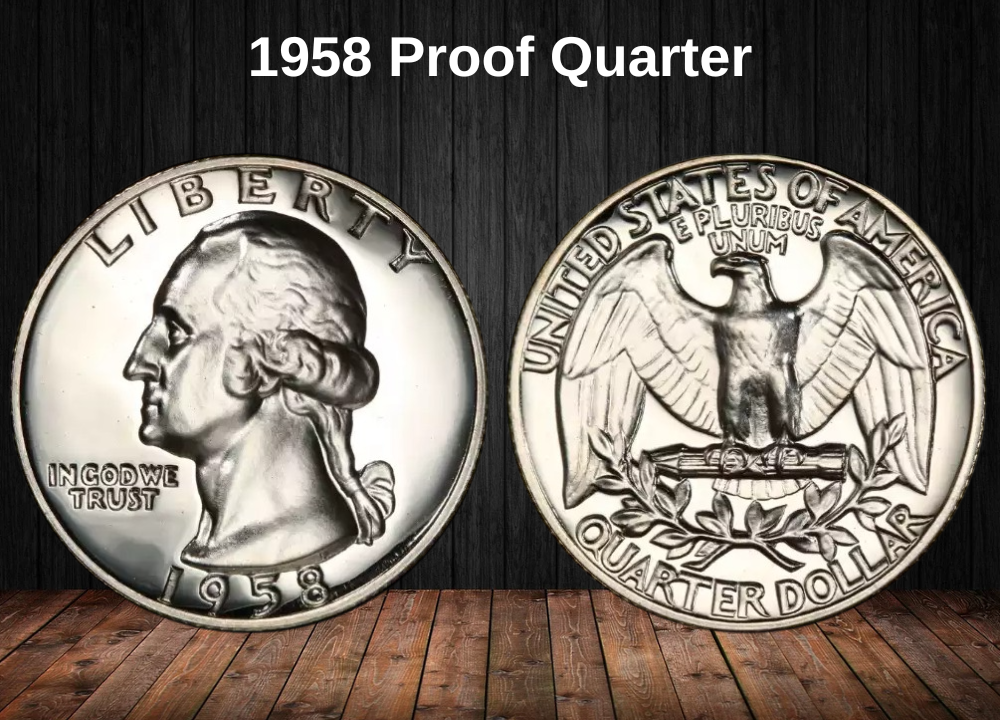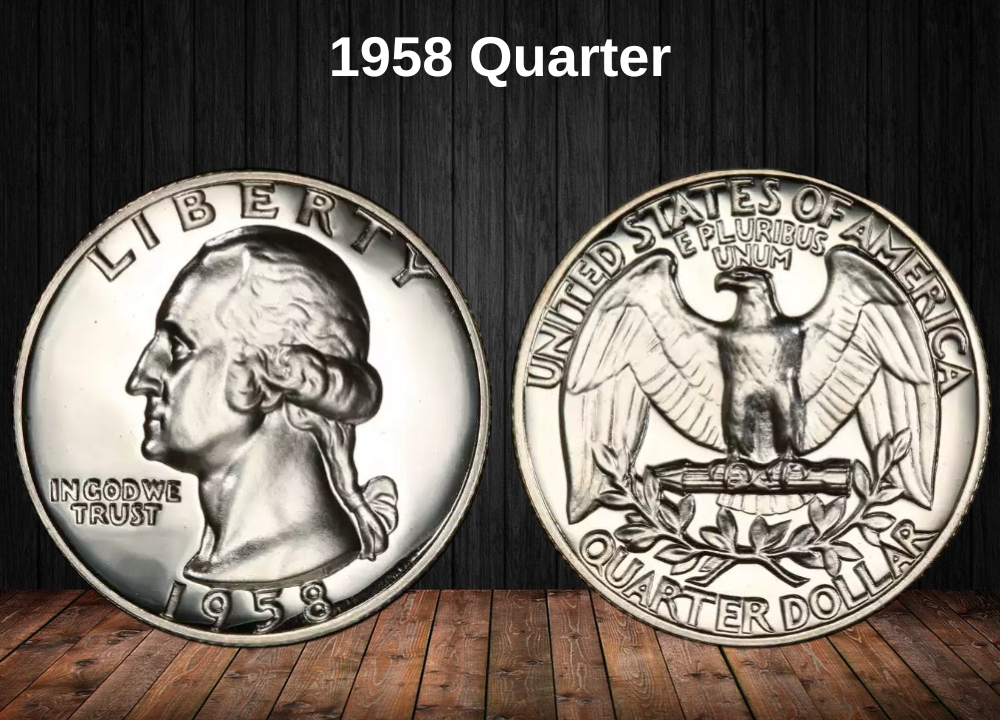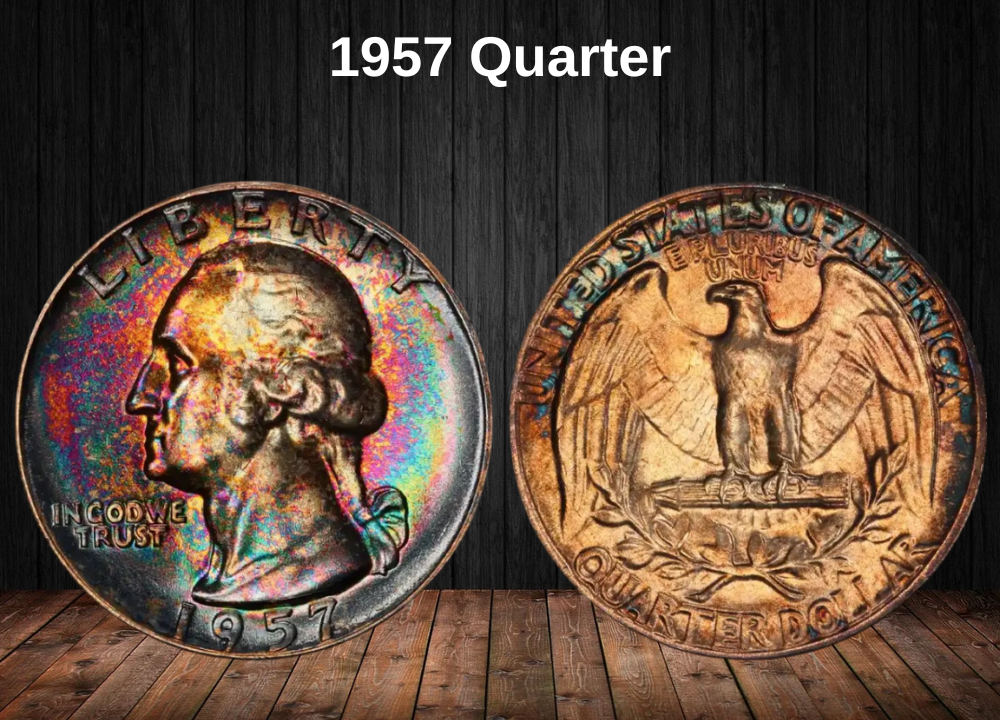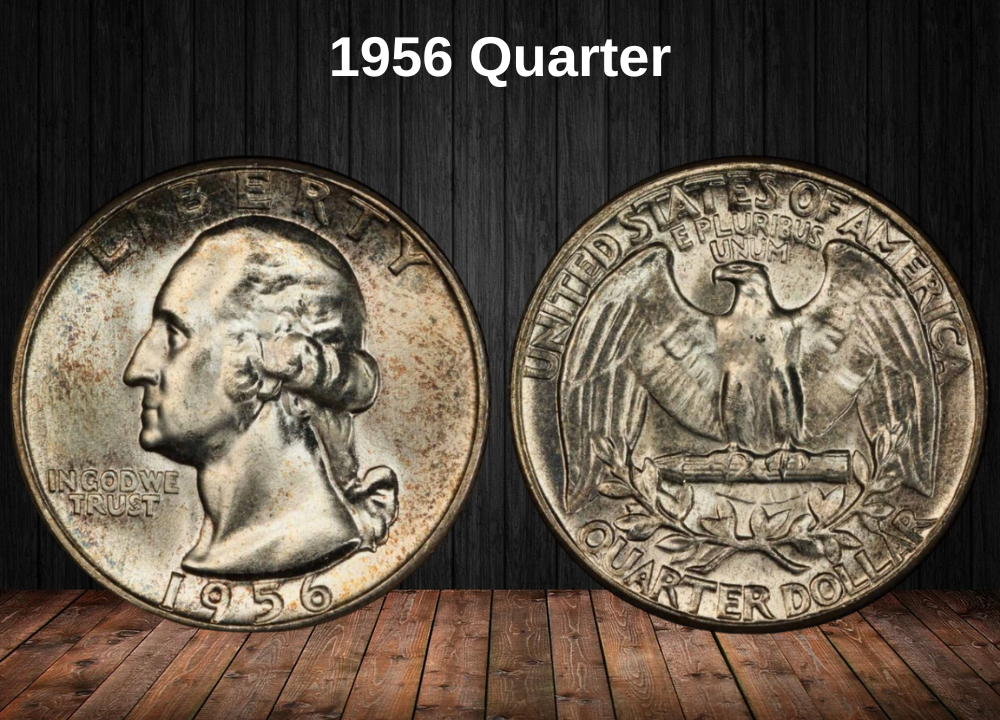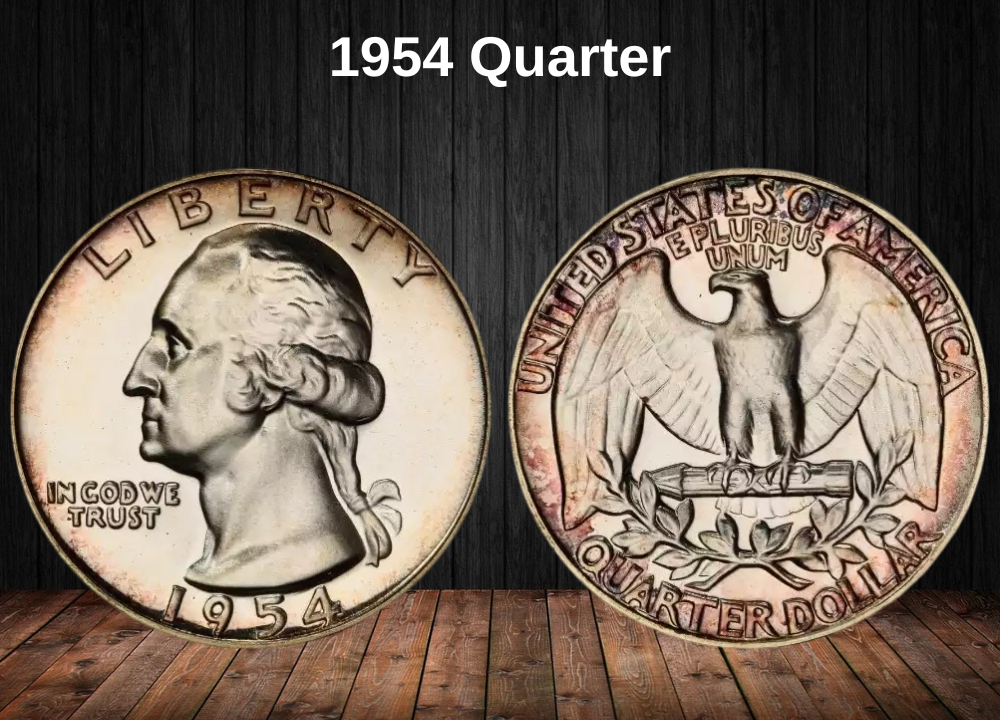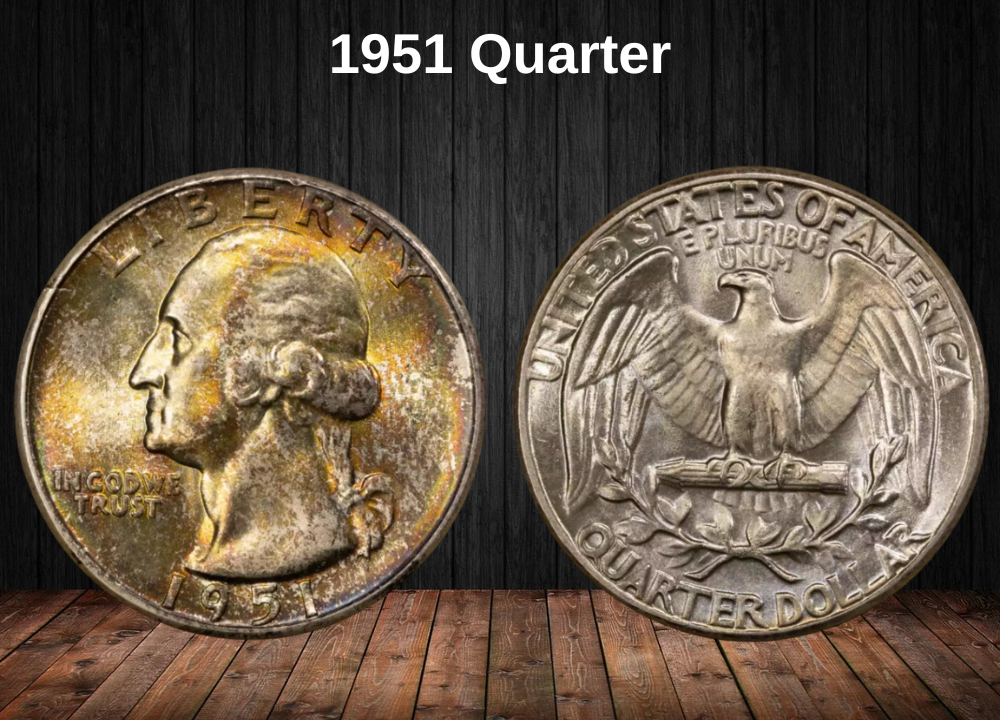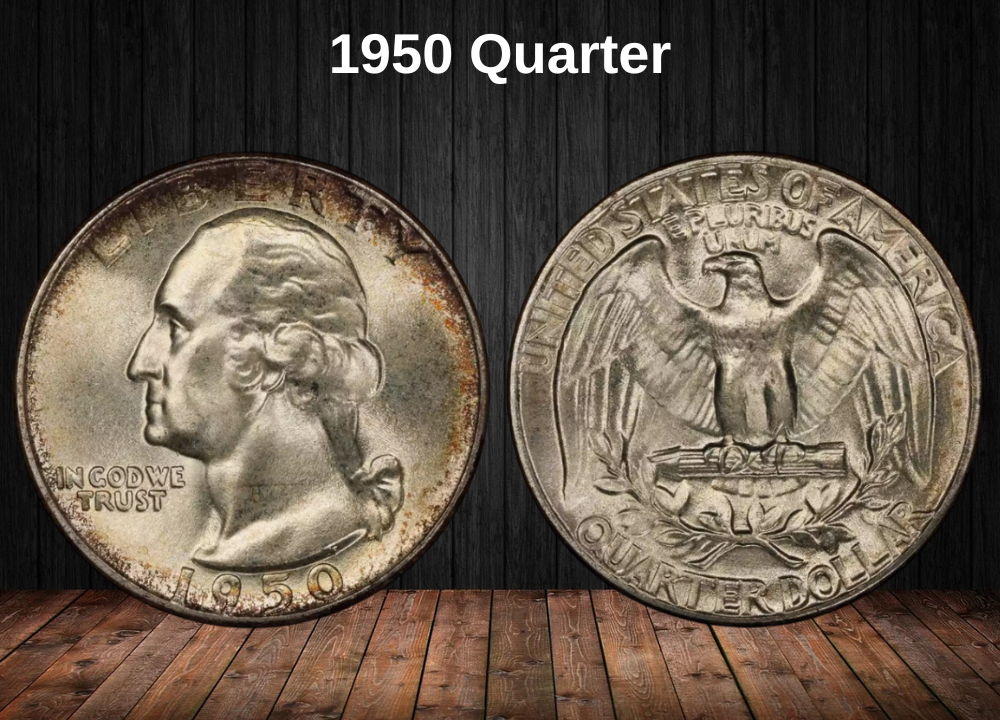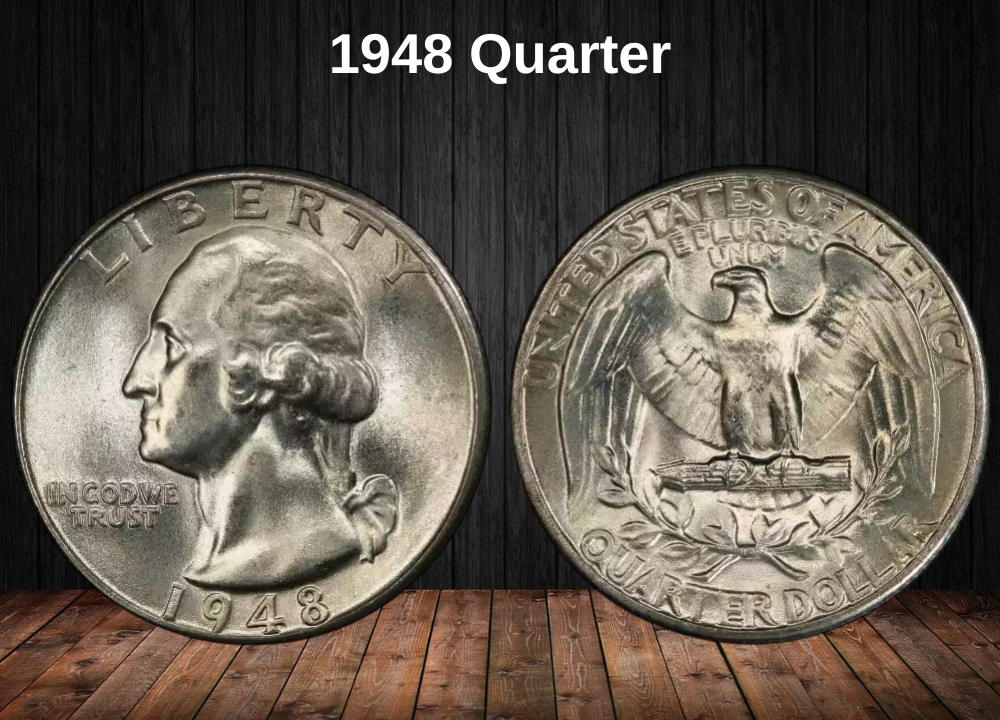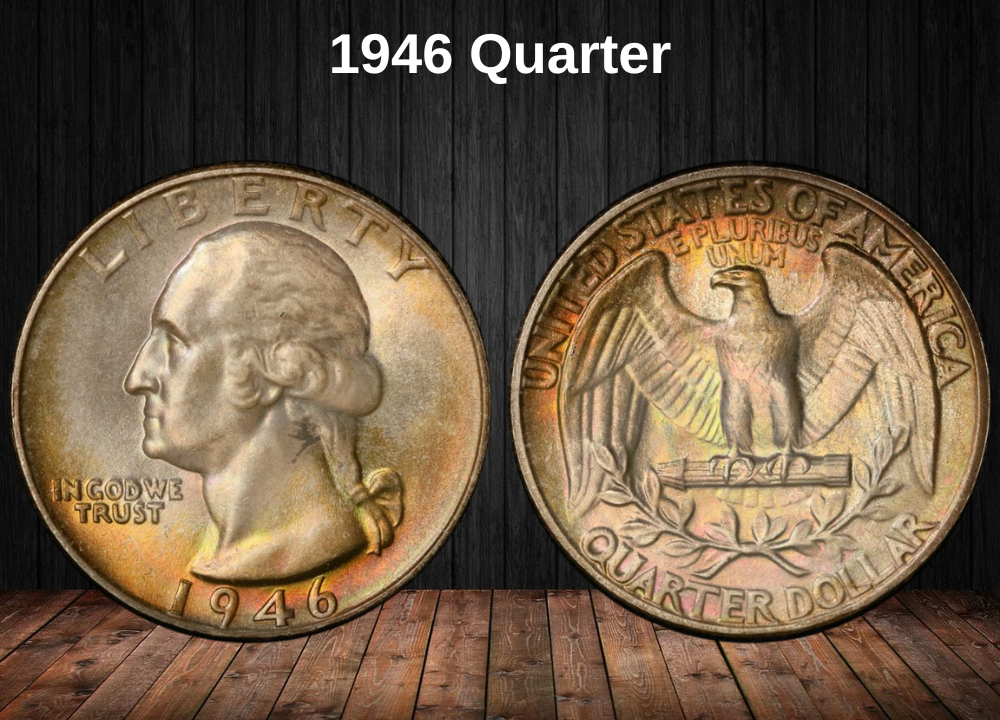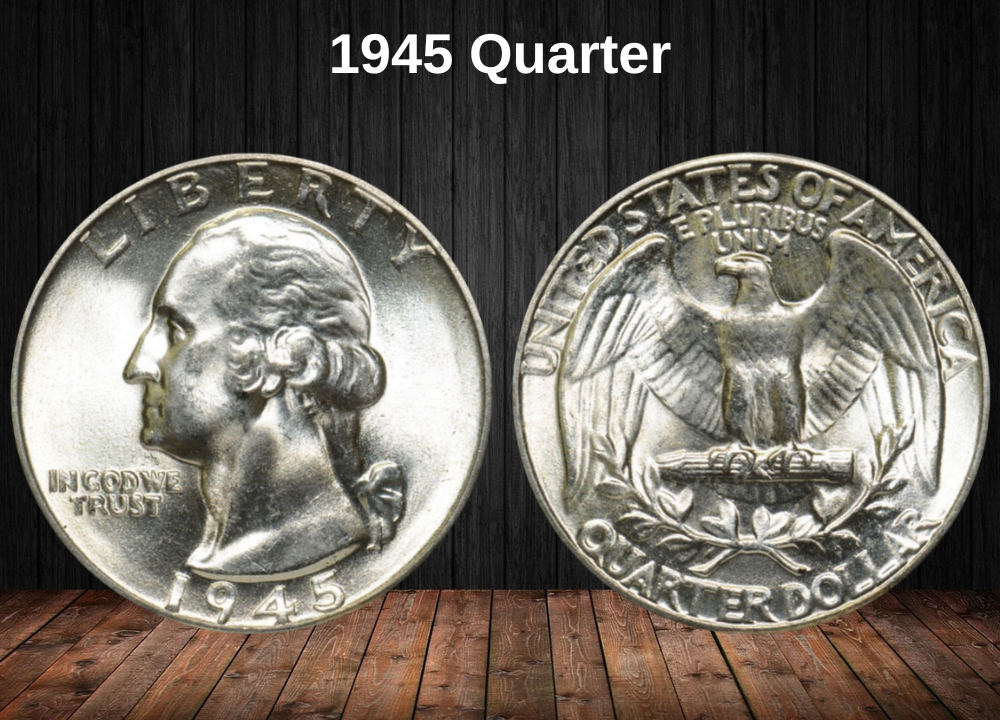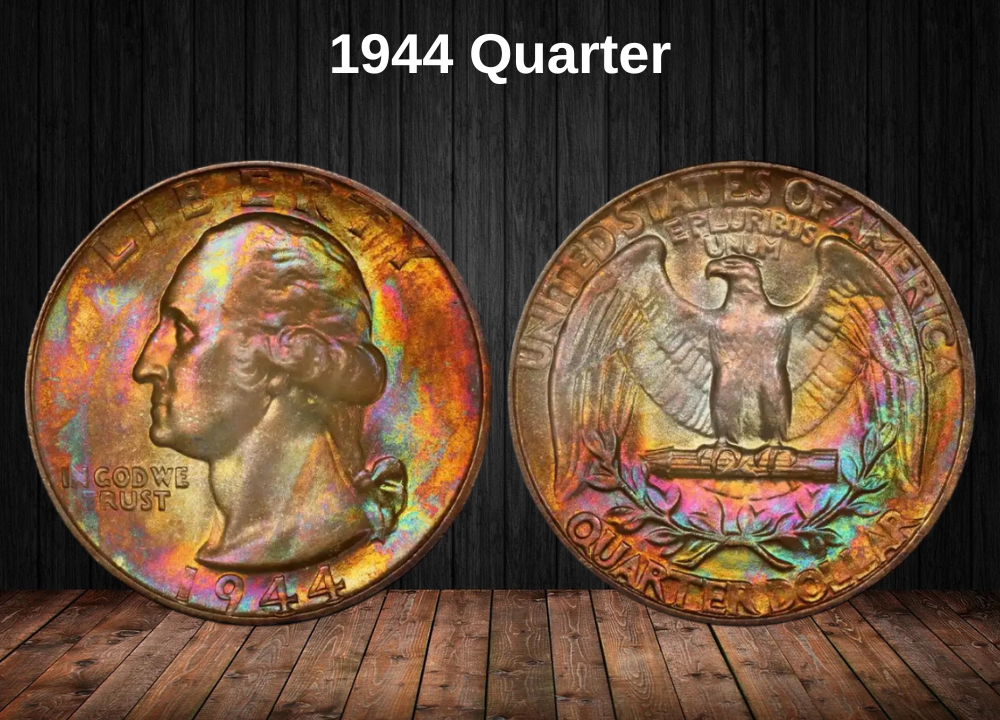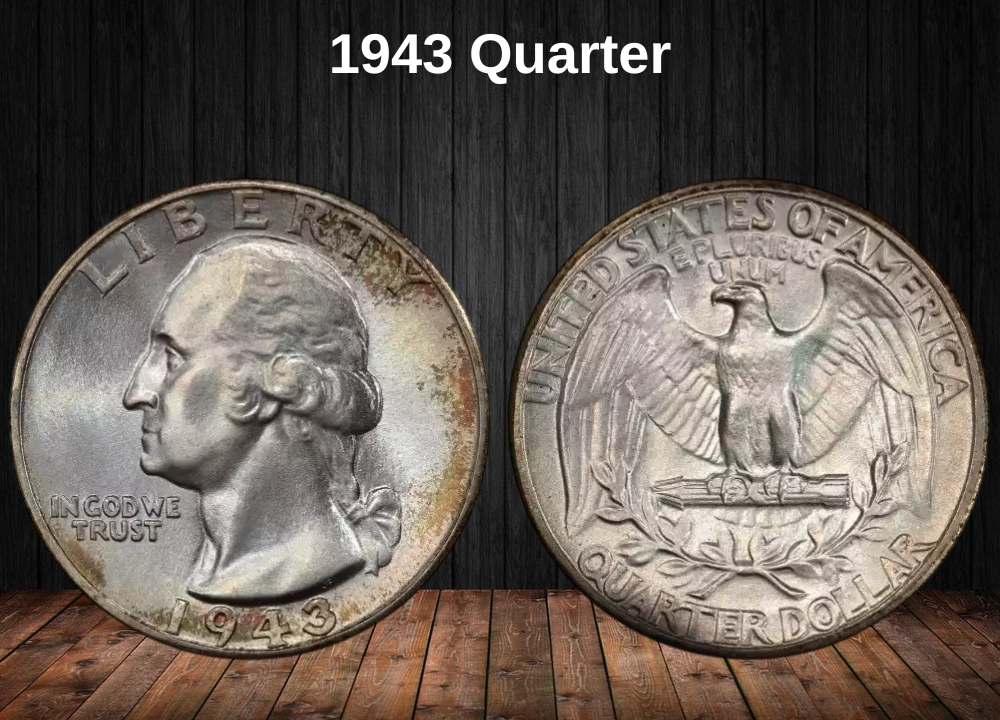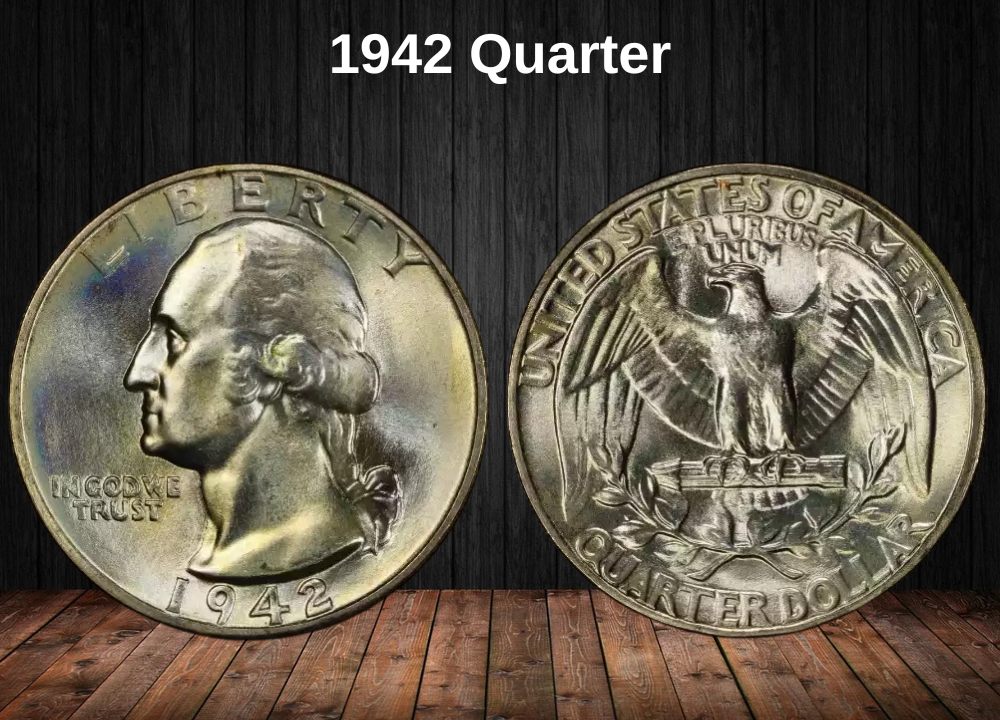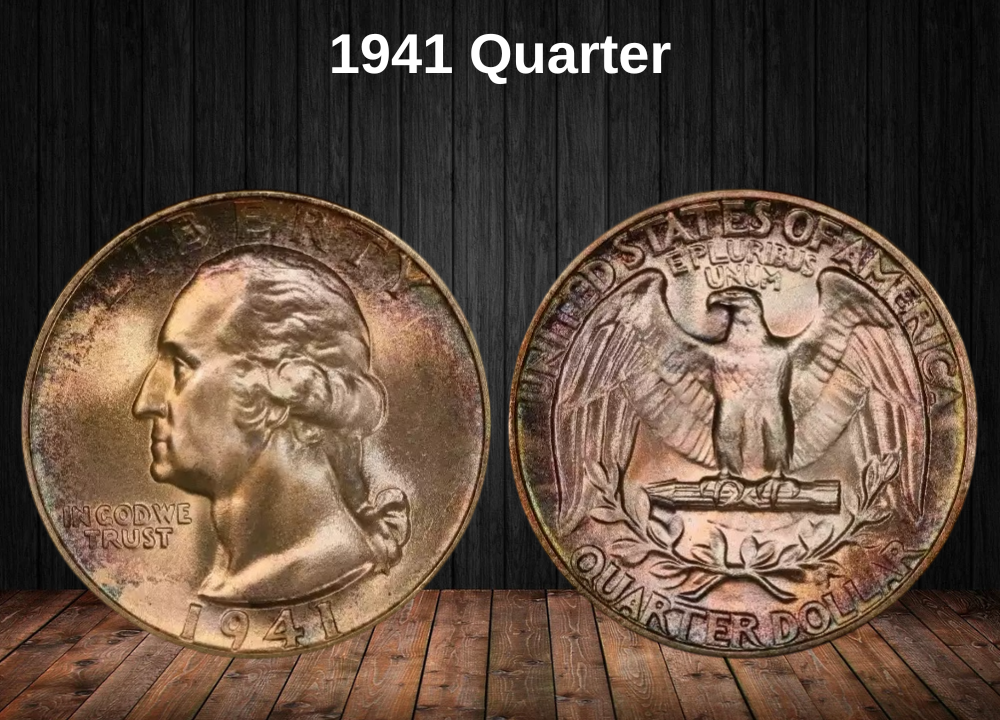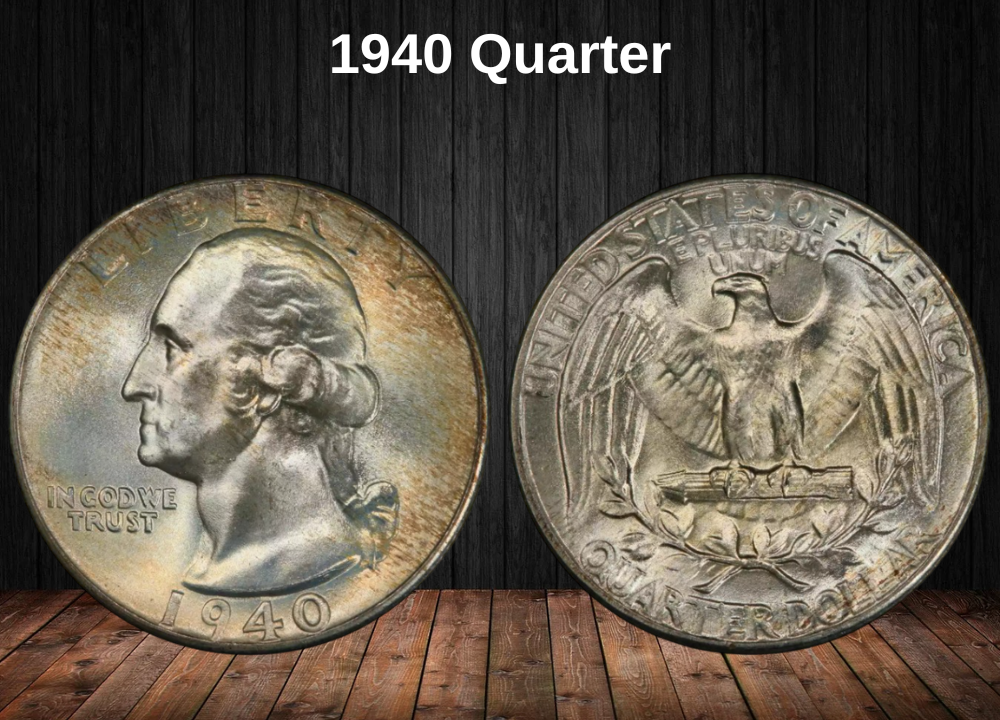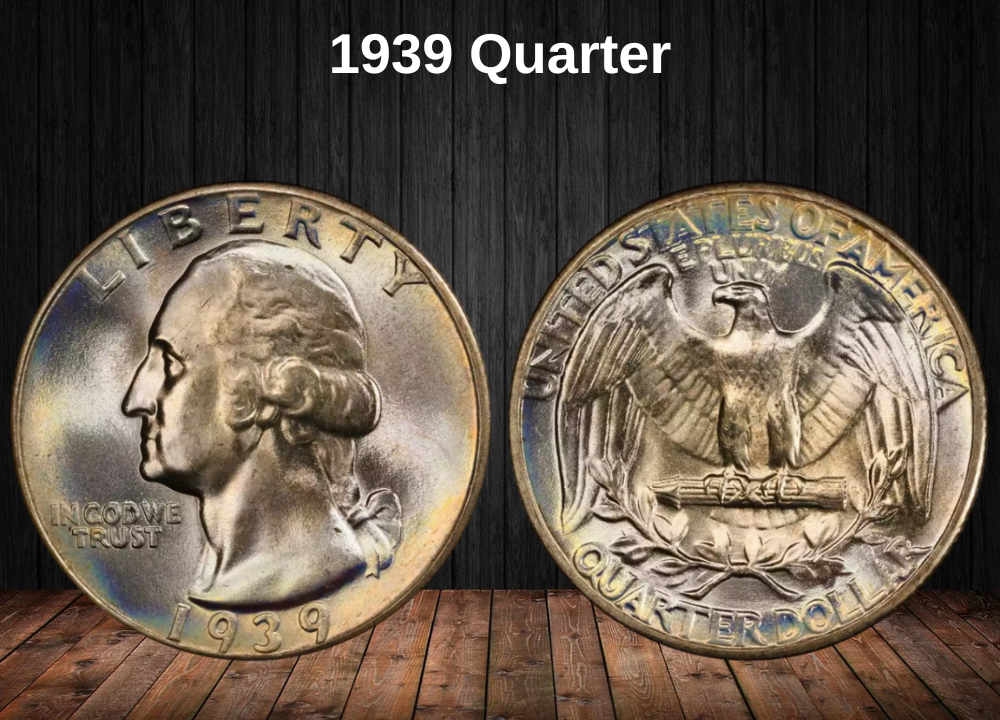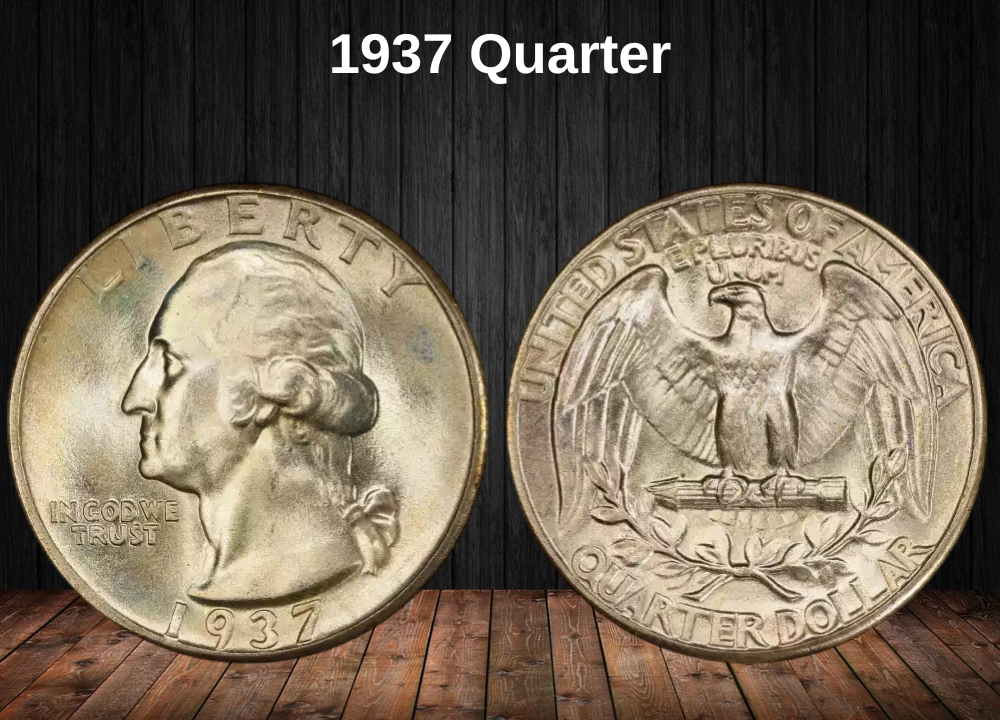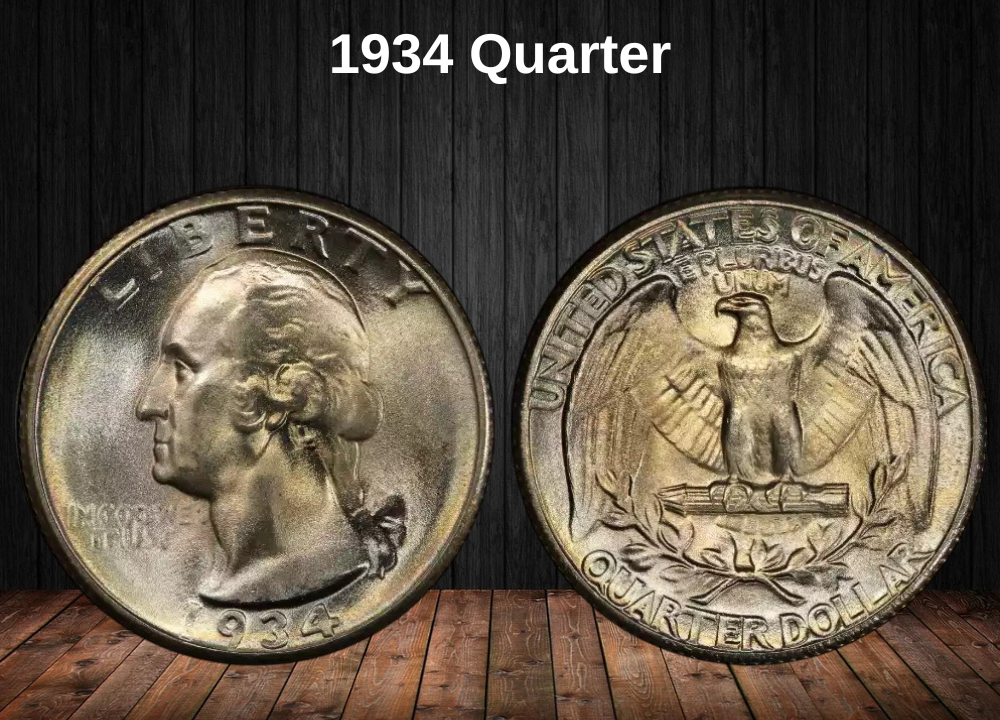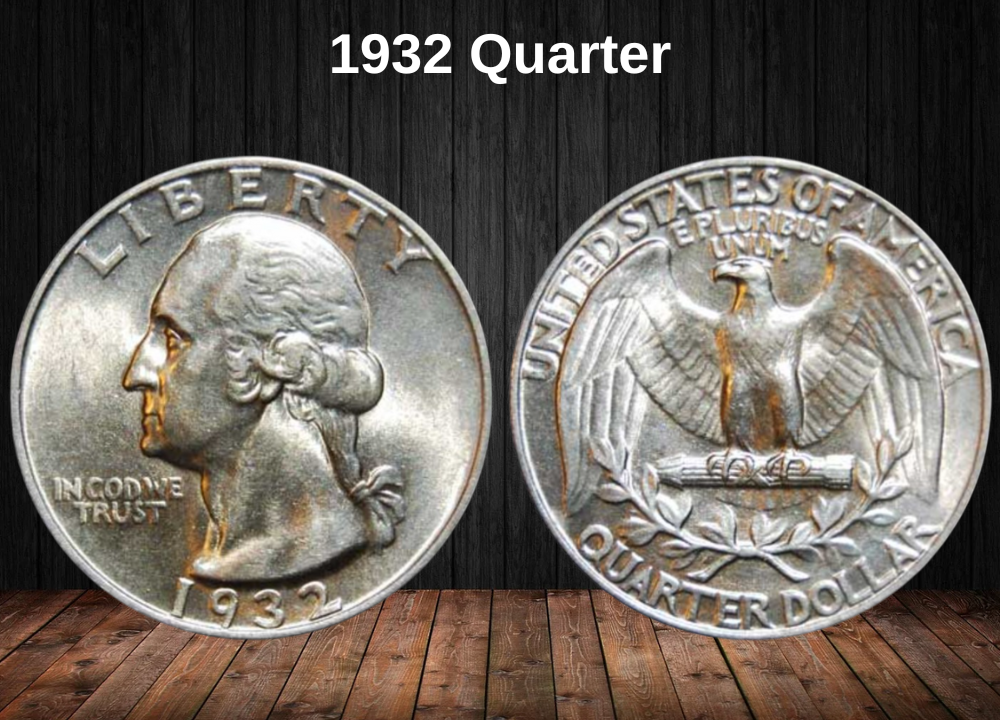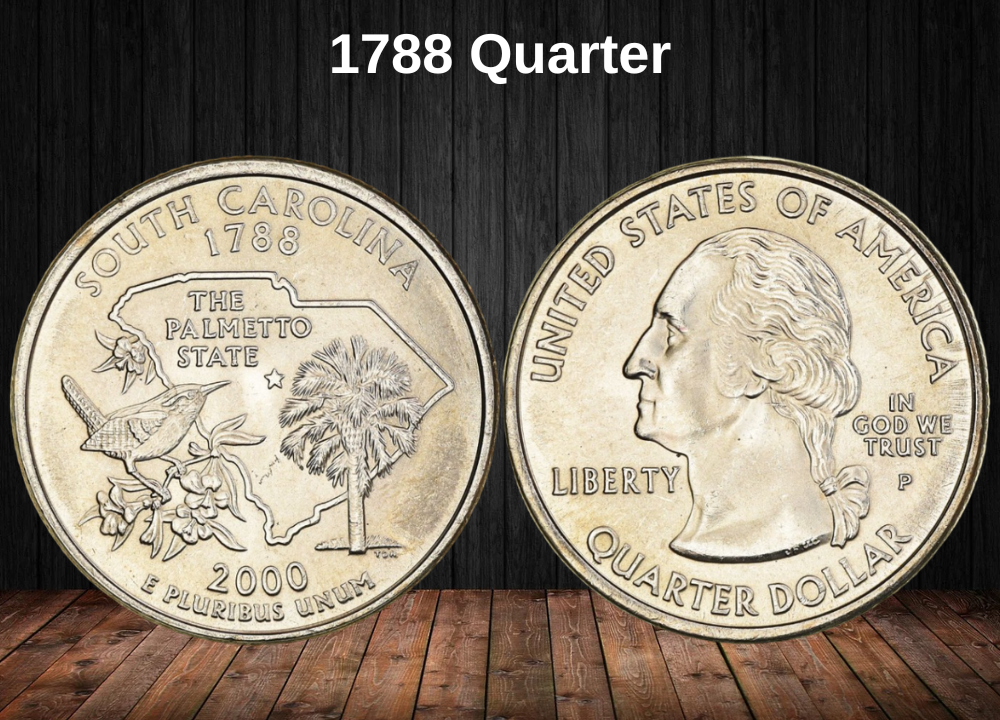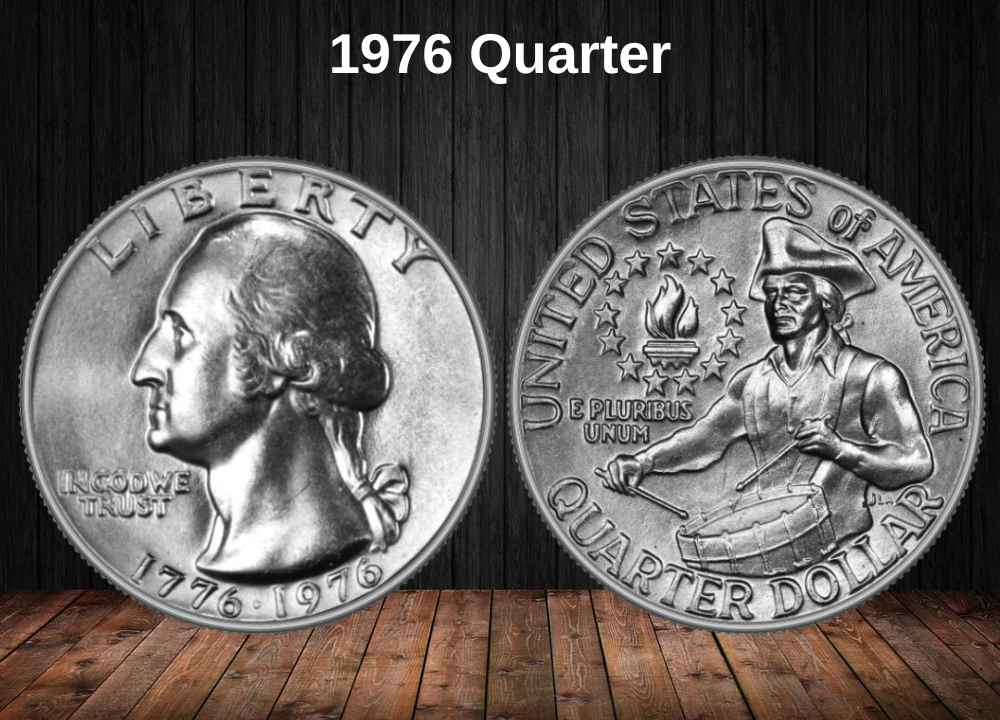Think 1935 quarters are just pocket change? Not even close.
Many casual collectors assume that old quarters without rare dates are worth only 25 cents. But the truth is very different—age plus condition plus mint mark can add up fast. Even the most common 1935 quarters hold strong value thanks to their 90% silver content, and high-grade pieces or coins with errors can bring hundreds of dollars.
Why 1935 Quarters Still Matter
The 1935 issue came in the middle of the Great Depression, when quarters were workhorse coins in daily commerce. Philadelphia, Denver, and San Francisco mints all struck Washington quarters this year, and while millions were made, survival in higher grades is surprisingly low. That’s why sharp examples with full details command serious premiums.
1935 Quarter Value by Variety
The chart below shows average retail values by mint mark and condition. Notice how the Denver issue (1935-D) nearly doubles the price of a Philadelphia piece in Mint State.
| Type | GOOD | FINE | AU | MS | PR |
|---|---|---|---|---|---|
| 1935 (No Mint Mark, Philadelphia) | $7 | $7 | $12 | $108 | — |
| 1935-D (Denver) | $7 | $21 | $135 | $325 | — |
| 1935-S (San Francisco) | $7 | $10 | $40 | $156 | — |
History of the 1935 Quarter
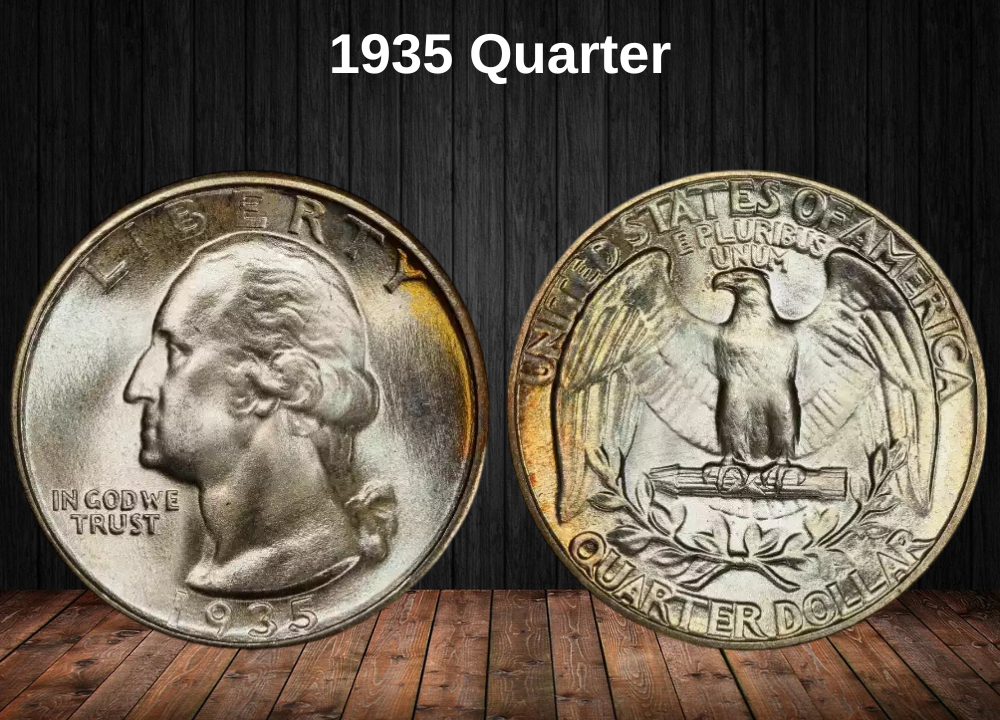
Long before the Washington quarter, U.S. coins mostly featured Miss Liberty, a symbolic female figure representing freedom. This tradition reflected the wishes of early leaders like George Washington and Benjamin Franklin, who disliked the idea of placing real people—especially political figures—on national coinage.
But by 1932, public opinion had shifted. To celebrate the 200th anniversary of George Washington’s birth, Congress authorized a new design featuring the nation’s first president. Originally intended for the Half Dollar, political debate redirected the project to the 25-cent piece, which was chosen because it circulated more widely.
The Washington quarter debuted in 1932 as a one-year commemorative, but its popularity cemented it as the new standard design. By 1935, only the third year of issue, the coin was still relatively new in American pockets—yet it was already on its way to becoming one of the longest-running designs in U.S. coinage history.
Key Features of the 1935 Quarter
Before diving into the design, it’s worth recalling a few numismatic basics:
- The front of a coin is the obverse (heads).
- The back is the reverse (tails).
- The edge is the thin side, often with grooves called reeds.
- The raised border is the rim or collar.
- Legends or mottos are the words, while the images are called devices.
- The flat surface surrounding the design is known as the field.
Obverse Design
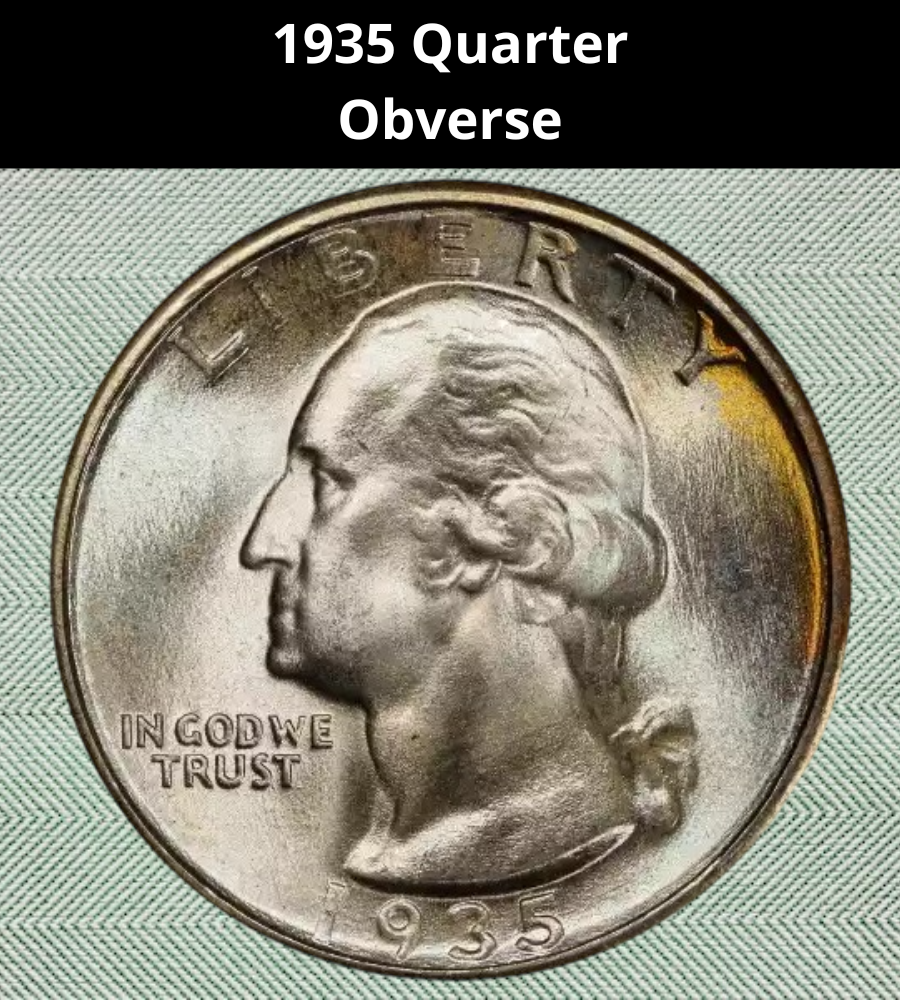
The obverse of the 1935 quarter features a left-facing portrait of George Washington, designed by sculptor John Flanagan. Surrounding elements include:
- LIBERTY positioned above Washington’s head
- The motto IN GOD WE TRUST to the left, just below his chin
- The date 1935 at the bottom rim
- Flanagan’s initials JF, engraved at the base of Washington’s neck
Reverse Design
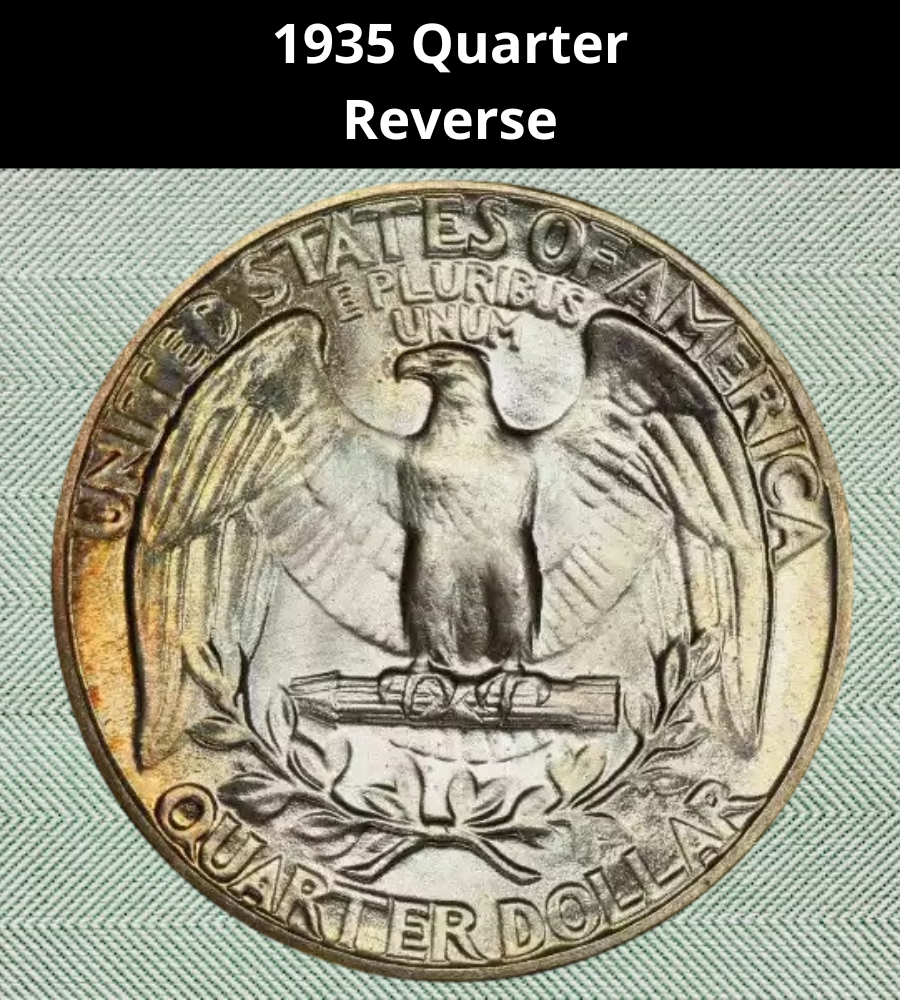
The reverse shows a striking image of a bald eagle perched on a bundle of arrows, symbolizing strength. Surrounding details include:
- The motto E PLURIBUS UNUM above the eagle
- An olive wreath extending from wingtip to wingtip, symbolizing peace
- The inscription UNITED STATES OF AMERICA at the top
- The denomination QUARTER DOLLAR along the bottom
- A mint mark (“D” for Denver or “S” for San Francisco) beneath the wreath; Philadelphia issues carried no mint mark
Other Specifications
The 1935 Washington quarter shares the same specifications as other early issues:
- Metal composition: 90% silver, 10% copper
- Weight: 6.25 g (0.2009 troy ounces)
- Silver content: 5.62 g (0.1808 troy ounces)
- Diameter: 24.3 mm (0.956 in)
- Thickness: 1.75 mm (0.068 in)
- Edge: Reeded, with 119 reeds to help deter silver shaving or counterfeiting
These specifications make the 1935 quarter not just a historical artifact but also a valuable bullion piece, since its silver content alone often exceeds its face value.
1935 Quarter Grading
Grading is what separates a $10 silver piece from a four-figure collector prize. For the 1935 Washington quarter, the difference comes down to eye appeal, strike quality, and how well the coin survived its 90 years in circulation.
A grade in the MS64–MS66 range pushes the coin into premium territory. At this level, a 1935 quarter should show:
- Exceptional eye appeal with crisp details and luster
- Minimal contact marks from bag handling
- Strong strike quality, with Washington’s hair curls and the eagle’s breast feathers fully defined
- Attractive natural toning, often rainbow-colored, which indicates proper long-term storage and adds significant collector interest
Coins that fall short in strike sharpness or show dull, lifeless surfaces are usually capped at lower Mint State grades. But when a coin checks all these boxes, grading services reward it with higher scores—and that directly translates to much higher market values.
1935 Quarter Value Guides
1935 No Mint Mark Quarter Value
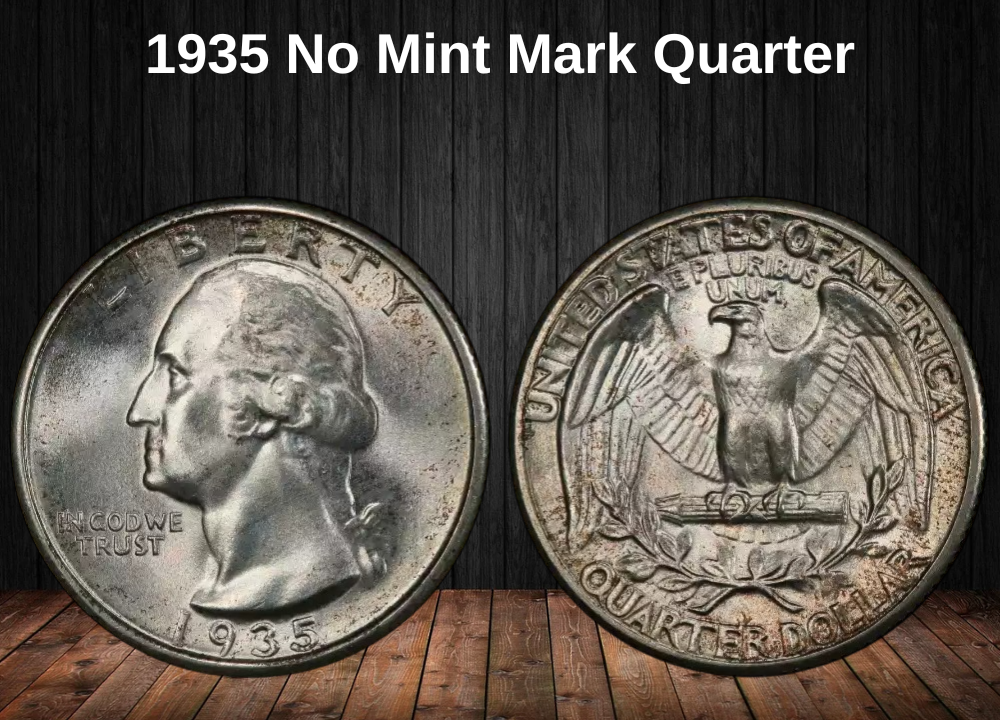
The 1935 Washington quarter without a mint mark comes from the Philadelphia Mint, which handled the bulk of quarter production during the Great Depression. While it’s the most common of the 1935 issues, it shouldn’t be overlooked.
Philadelphia’s 1935 output is known for strong strikes and sharp details, thanks to generally solid quality control. As a result, many circulated pieces still show clear features, making them a popular and accessible starting point for new collectors.
But here’s the twist: in higher grades, especially Mint State coins with original luster or attractive natural toning, the Philadelphia issue commands premiums far above silver melt value. Certified MS65 and MS66 examples are increasingly scarce, and their prices reflect it.
For most collectors, the 1935 (no mint mark) quarter is the entry point into the series—but for those who chase high-end eye appeal, it can become a standout piece in any Washington quarter set.
1935-D Quarter Value
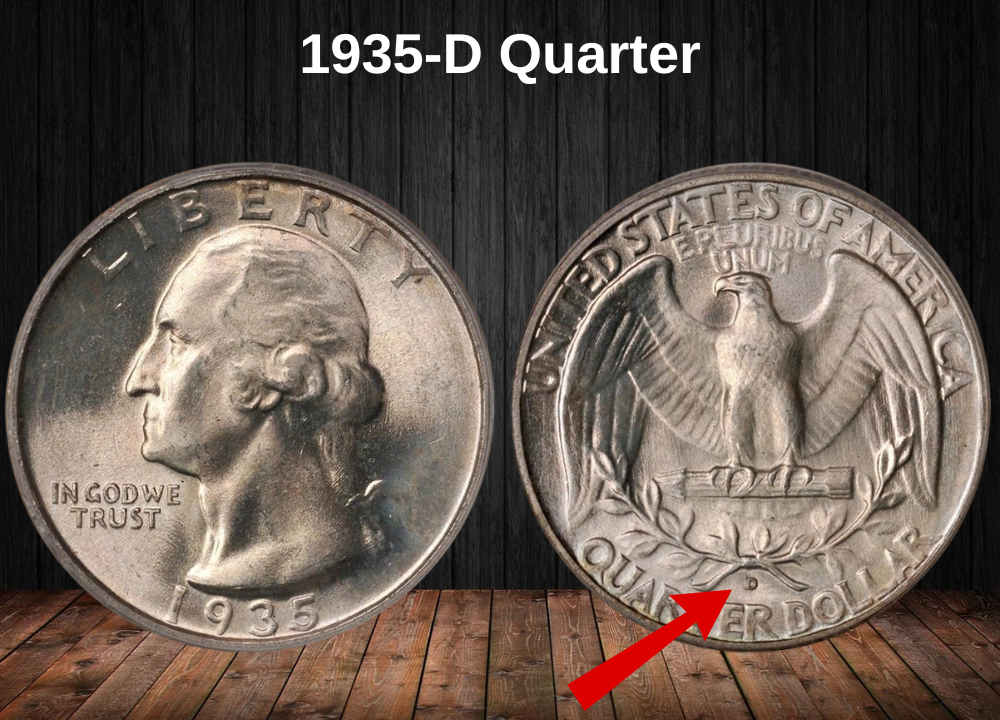
The 1935-D Washington quarter from the Denver Mint sits in the middle ground of rarity and value among the three issues from that year. While more common than the elusive San Francisco variety, it has a noticeably lower survival rate in high Mint State grades compared to the Philadelphia issue.
One of the quirks of Denver Mint production in the 1930s was its storage and handling practices—coins often picked up extra bag marks during distribution. That makes finding examples with clean, unmarked surfaces especially tough.
The “D” mintmark, located beneath the wreath on the reverse, is typically well-defined on this issue, so authentication is straightforward.
For collectors, the 1935-D offers a sweet spot: scarcer and more desirable than the Philadelphia quarter, but still more affordable than the 1935-S in comparable condition. In A
1935-S Quarter Value
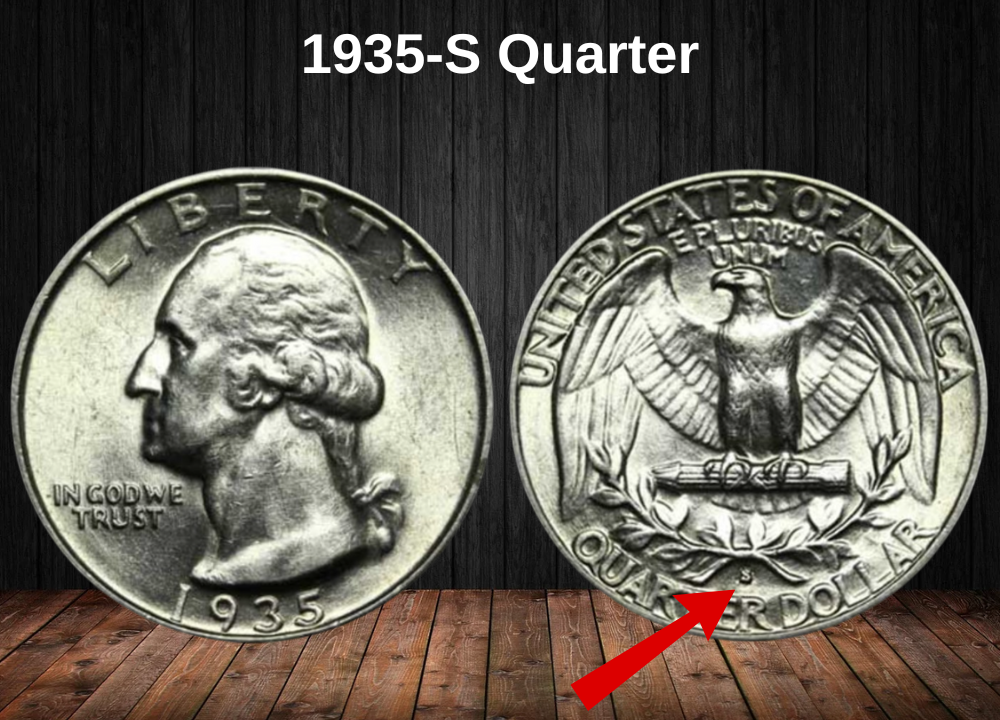
The 1935-S Washington quarter is widely considered the key coin of the 1935 series, ranking among the tougher early Washington quarters overall. With just over 5 million struck, San Francisco’s output was modest compared to Philadelphia and Denver. Most of these coins circulated heavily on the West Coast, where fewer collectors were setting aside fresh examples.
That heavy use means even mid-grade 1935-S quarters command premiums, and truly high-grade survivors are genuinely rare. While the “S” mintmark, placed beneath the wreath on the reverse, is usually clear, the challenge lies in finding coins without excessive wear, bag marks, or weak luster.
Certified examples in MS65 or better are prized trophies for Washington quarter specialists, often drawing strong auction results that far outpace their Philadelphia and Denver counterparts. For anyone building a complete set of early Washington quarters, the 1935-S is the crown jewel.
Rare 1935 Quarter Error List
1935 Doubled Die Obverse (FS-101)
The 1935 Doubled Die Obverse FS-101 ranks among the most important error varieties in the entire Washington quarter series. On this coin, strong doubling can be seen on LIBERTY, the date digits, and the motto “IN GOD WE TRUST.” The doubling is bold enough that even beginner collectors can spot it without magnification.
What makes the FS-101 so extraordinary is how it elevates a common Philadelphia strike into a true numismatic rarity. The doubling occurred during the hubbing process, meaning an entire run of coins carried this dramatic error into circulation.
Few survived. Most examples were spent down during the Depression, worn into obscurity, or simply overlooked. That scarcity makes authenticated FS-101 quarters highly desirable today. In higher grades, they command significant premiums and remain one of the top targets for Washington quarter specialists.
Where to Sell Your Quarter Coin?
Now that you know the value of your quarter, the next step is deciding where to sell it. There are several trusted options—both online and in person—that can help you get the best price depending on your coin’s rarity and condition.
To see the full list of recommended places, along with their advantages and disadvantages, check our complete guide on where to sell your quarter coins.
FAQ About the 1935 Washington Quarter
1. Why is the 1935 Quarter important in the Washington series?
The 1935 issue represents the third year of the Washington Quarter’s circulation, following its 1932 debut and the gap year in 1933. By 1935, the design was firmly established, and mintages increased significantly, making it more common than earlier key dates.
2. What mint marks exist for the 1935 Quarter?
The coin was struck at three mints: Philadelphia (no mint mark), Denver (“D”), and San Francisco (“S”). While Philadelphia coins are the most common, the 1935-D and 1935-S are scarcer, especially in higher Mint State grades.
3. Are there any notable varieties or errors for the 1935 Quarter?
Yes. Collectors look for doubled dies, repunched mint marks (RPMs), and off-center strikes. While not as famous as the 1934 DDO, these varieties still carry solid premiums and can make an otherwise common 1935 coin quite valuable.
4. How much is a 1935 Quarter worth?
In circulated condition, most 1935 quarters are worth a small premium above silver melt value (around $5–$15). However, high-grade examples in MS65 or better can range from $200 to over $1,000, depending on mint mark and strike quality.
5. What should collectors check when buying a 1935 Quarter?
Pay close attention to luster, strike detail, and signs of cleaning. The eagle’s breast feathers on the reverse are a key indicator of strike sharpness. Coins with original surfaces and strong detail are far more desirable and can command significant premiums.

